


THERE'S NO BETTER FEELING THAN...





THERE'S NO BETTER FEELING THAN...

The Great Event Show
Feb 5th & 6th | Teaneck Marriott | Teaneck, NJ
The Atlanta Shoe Market
Feb 15th-17th | Cobb Galleria Centre | Atlanta, GA
BSTA Northeast Expo
Feb 25th & 26th | DoubleTree Downtown | Manchester, NH
HighSoft Removable insole
Gore-Tex
Warm lining



Quaker State
Gary Champion, president of Clarks Americas, on the brand’s 200th anniversary: a
By
Greg Dutter
16 Fall/Winter ’25 Preview
Trend spotting the cool season’s key silhouettes, colors and materials.
By Kathleen O’Reilly
30 Tulsa Treasure
Fleming’s Comfort Footwear celebrates 40 years of fitting success. By
Kathy Passero
34 Medieval Times
Romantic
O’Reilly
Photography: Trevett McCandliss; styling: Mariah Walker/Art Department; fashion editor: Kathleen O’Reilly; models: Olivia Schofield, Anna Haggerty/Fenton Model Mgmt.; hair and makeup: Nevio Ragazzini/ Next Artists; photo assistant Raymond Collette; photo and styling assistant: Nellyfer Espinoza.

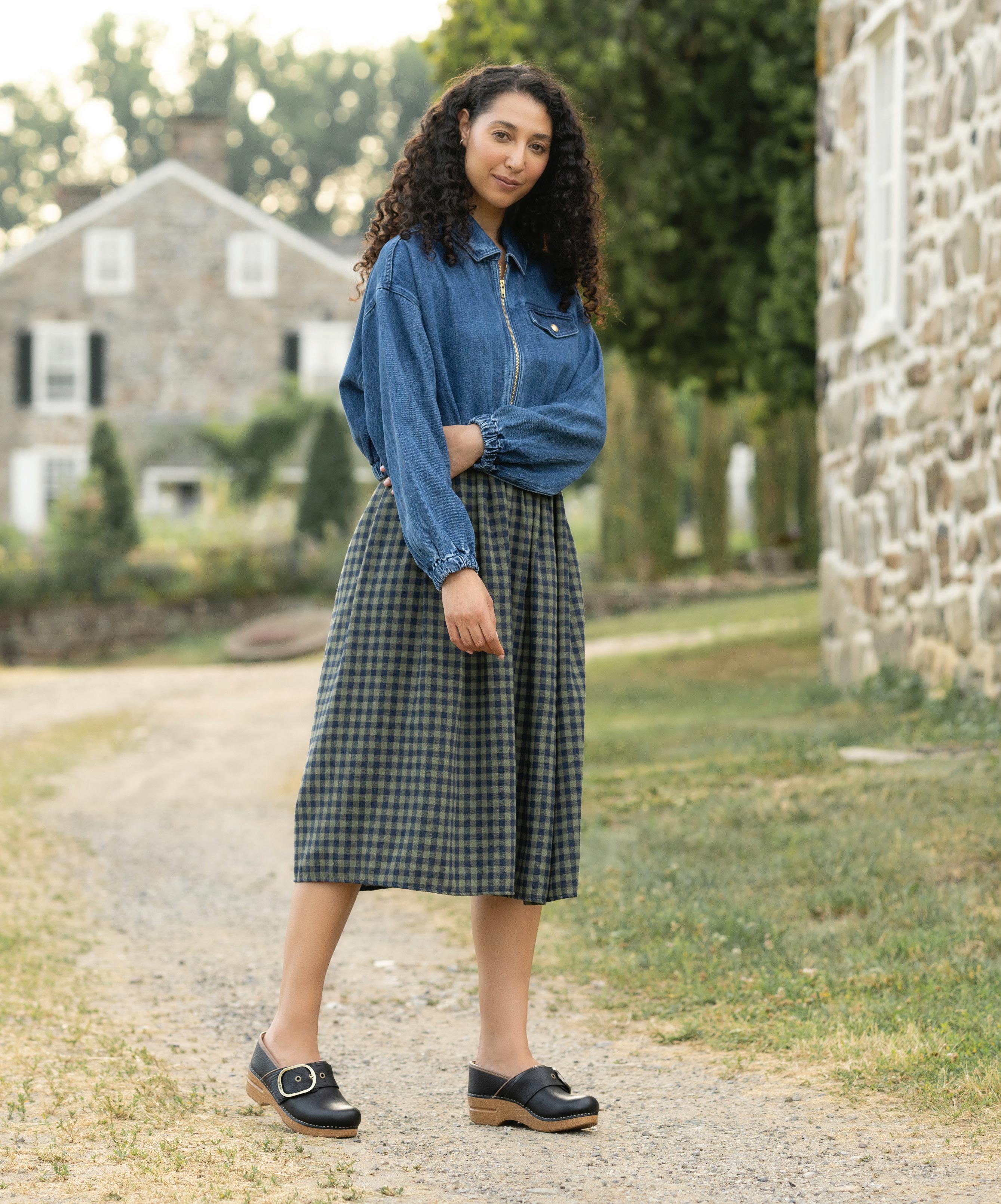

MAKING EACH ISSUE of Footwear Plus involves lots of research and reporting. It’s the necessary grunt work behind every article featured in these pages—for 35 years running, I might boastfully add. It requires a lot of digging and sifting in search of facts, insights, analysis, and opinions that tells a story accurately and fully. Oftentimes the discovery process unearths colorful asides and gem anecdotes that can add so much to a story. They shed light on and connect to the bigger story.
Take our Q&A (p. 10) with Gary Champion, president of Clarks Americas, for example. A respected industry veteran of four decades, many readers are familiar with his background story that includes an earlier 25-year run with Clarks, mainly as head of sales, that saw it become the dominant comfort brand in the market. That was followed by leadership stints at Geox USA and Earth Footwear, only to return to Clarks eight years ago to lead the brand back to its better days. That remains a work in progress, which is the lead story here as Champion explains in detail how the brand, celebrating its 200th anniversary, is going about that. Now one might think that after six Q&As over the past 16 years, I’d dug up all the nuggets about the man. Wrong. For example, in response to who has had the greatest influence on him in his life, he led with his wife of 46 years. That personal anecdote reflects in Champion’s steadfast loyalty to Clarks, its employees, and our industry. He’s not one to cut and run. It says a lot about his determination to see his Clarks goals come to fruition
More hidden anecdotal gems are revealed in our A Note to My Younger Self (p. 45). (Actually, this series is an absolute gold mine for such discoveries.) James Rowley, founder of Woolloomooloo, recalls how the rug was pulled out from under his happy-go-lucky days growing up in Australia when his family moved suddenly to Seoul, South Korea. Rowley, though, is blessed with excellent networking genes. He made friends fast and, in a matter of months, picked up Korean enough to “order from a menu, give directions, get out of trouble, haggle, and use every swear word in the book.”
Is it any surprise that Rowley adapted so well in our world, first as owner of three women’s boutique stores followed by a successful transition into wholesale as head of Kork-Ease, followed by leadership stints at Geox USA and Mephisto USA, and then returning to his entrepreneurial roots at Woolloomooloo, an Australian wool-based athleisure brand. He’s a fast learner, people-oriented, and unafraid to embrace new challenges. Other gems unearthed: Rowley is a former tennis pro instructor, plant manager for a bull bar manufacturer in Australia, and on-site event coordinator for Ogilvy & Mather. It all serves as relevant background to his latest entrepreneurial efforts— starting with the fact that he has a track record of success.
Two more stories rich in anecdotal details involve our What’s Selling profiles (p. 46-47). First up is Blue Suede Shoes + Wine in Austin, TX. The women’s boutique/wine bar combines owners and best friends Jennifer Parkman and Cynthia McMillioan’s beloved pastime of wine sipping and shoe shopping into a business. Neither hails from retail or shoe industry backgrounds—Parkman was a veterinary technician and McMillioan worked in accounting, real estate, and home building—but that hasn’t stopped them from pursuing their dream. The learning curve, admittedly, has been steep. Wisely, they’ve embraced the wisdom and assistance offered from many within our industry. Above all, they refuse to be deterred. Their working mantra: “We’ll figure it out!” (Fun nugget: they have matching tattoos of that very phrase!) Three years in and business is thriving. They’ve built an inclusive environment with curated events and goods, support local causes, and collaborate with like-minded local businesses. That’s the lead story: brick-and-mortar retail, done well, can thrive. The background to this is the colorful tale of two friends making a go of it, matching tattoos and all.
Our second profile is of Woldruff’s Footwear & Apparel in Goshen, IN. The sit-and-fit and casual apparel stores are located a few doors apart. Interesting nuggets to this story include owner Tim Hethcote having been the former owner’s employee No. 1 when it opened in 1992. He left a few years later only to return in 2015 as manager. Five years later, Hethcote and his wife, Linda, purchased the business. So far so good, despite pandemic disruptions, Hethcote reports. The couple, celebrating their 45th wedding anniversary this year, is committed to the business. Each bring respective attributes that balance well. They take the same days off, even. For Hethcote, it’s a dream fulfilled. Because without the digging by our reporter, Kiernan McCormick, we would have never discovered that he had long desired to give store ownership a go. He didn’t want to “retire not knowing if I could make it work.” He’s proud that he “got in the game.” Hethcote’s leap of faith anecdote is just one of many diamonds embedded in all our stories.
Last but not least is our retail profile (p. 30) of Fleming’s Comfort Footwear in Tulsa, OK. It has too many anecdotal gems to list here. But I’ll squeeze in one: Before owner Ryan Fleming took over the family business, he was working as a missionary in the Himalayas. When his mom told him she had decided to sell the business, it brought Ryan home. The rest is (ongoing) history. Enjoy the issue.
Greg Dutter Editorial Director



Our feet are not flat. They are all unique and full of beautiful curves & contours that connect us to the earth below. At täōs, we design from the ground up to support your feet & keep you moving through life.








a




THE LEADER OF the free world is not the only new president of late.
Justine Suh has taken the reins of Dearfoams, a division of RG Barry Brands (RGB) based in Pickerington, OH. She will report directly into Robert Mullaney, CEO of RGB.
“Justine brings an exceptional blend of expertise and vision at a pivotal time in the brand’s history,” Mullaney says. “With a proven track record of growing globally recognized brands (previous leadership positions include Cole Haan, Deckers Brands, Tory, Burch, and Prada), her strategic approach to merchandising and unwavering focus on consumer needs make her uniquely positioned to lead us into our next chapter.” He adds, “Under her leadership, we’re poised to elevate Dearfoams through innovative product development, refined brand positioning, and expanded opportunities in the marketplace.”
In recent years, Dearfoams’ has introduced novelty family slippers (2018); Fireside, a premium line of shearling slippers and boots in 2019 (pictured); and versatile indoor-outdoor footwear (2021). The brand has also gained recognition through licensing with socks, coldweather goods, a pet product line, home décor, and family sleepwear. Suh will oversee product merchandising, design, planning, sales, marketing, and licensing operations.
Suh sees similar big growth potential as with some of her previous career stops. That includes 78 years of history, ranking as the No. 1 brand in slipper units sold, and a broad reach across multiple consumer segments who shop mass market and department stores. “Great brands resonate across generations, and Dearfoams has already made significant strides in connecting with a broad audience,” she says. “My goal is to accelerate this progress by deepening our emotional connection with not only our loyal, multi-generational customers, but also by engaging new and younger audiences. Additionally, I see a great opportunity to explore and broaden product categories so that Dearfoams can further evolve into a lifestyle brand, encompassing comfort and style in ways that appeal to our diverse consumer base. This will ensure the brand remains relevant, continues to evolve, and maintains its strong heritage of comfort innovation.”
sification and market expansion. Suh also held the role of Vice President, Global GMM of Omni Channel at Deckers Brands. “One of the key lessons I’ve learned is the importance of staying fresh, relevant, and adaptable,” she says, noting that the industry is constantly evolving with changing consumer preferences, technological advancements, and market dynamics.
“Staying attuned to these shifts and being able to quickly pivot is crucial to maintaining brand momentum.” Suh has also learned the value of building strong, collaborative teams that think creatively and execute fast. Another lesson is the need to balancing heritage with innovation. “It’s vital to honor the brand’s history while also finding ways to inject new ideas and stay ahead of the competition and maintaining our leadership position,” she says.
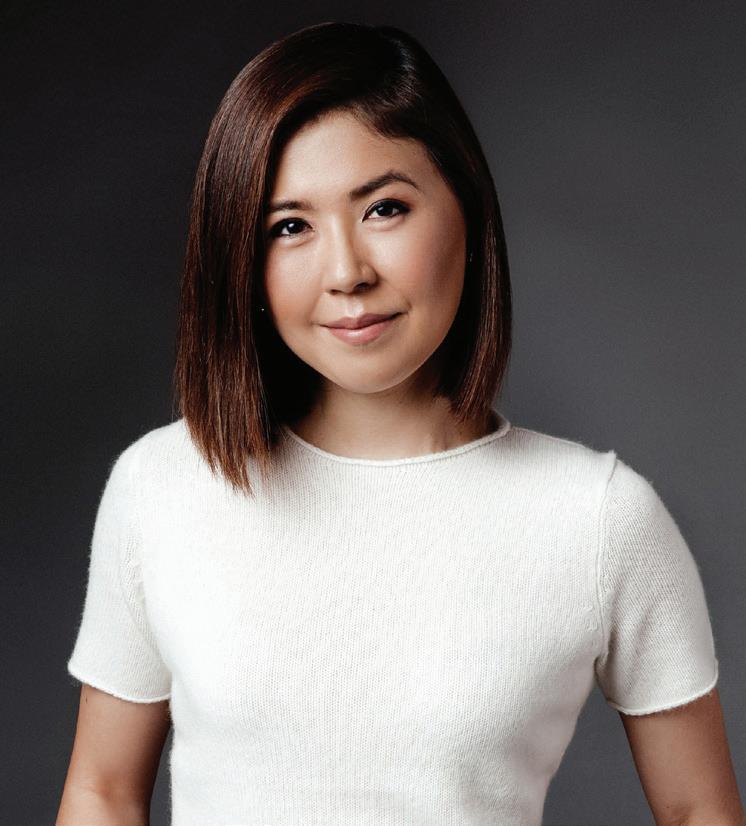

Suh, who most recently was General Manager of North America retail for Carter’s, a multibillion children’s apparel brand, is excited to return to her shoe industry roots. “I’ve always had a deep passion for this industry, as it’s a sector where creativity, innovation, and consumer connection come together in such a fun and meaningful way,” she says. “I missed the unique challenges and opportunities footwear offers.” Meeting Mullaney and the rest of the management team sealed the deal, as Suh felt an immediate alignment in vision and a commitment to maintaining Dearfoams leadership position in slippers and expanding further into a lifestyle brand. “The team’s passion and drive to take Dearfoams to new heights really resonated with me, and it reaffirmed my decision to return to an industry I love, where I can contribute to the continued evolution and success of a brand with such strong potential,” she says.
The first order of business for Suh is to deep dive Dearfoams’ market position, learning its strengths and areas for growth across wholesale and DTC channels. That includes refining the strategic direction for Fireside, classic slippers, and casual footwear with a focus on innovation, product development, and marketing aimed at staying ahead of consumer trends. “A key priority will be evolving our product categories to meet the diverse needs and preferences of a broader customer base, especially younger generations like Millennials and Gen Z,” she says. “I’m also deeply committed to advancing comfort innovation while introducing new features that delight customers and foster a deeper emotional connection.”
Suh will tap into her extensive career experience, which also include positions with Ralph Lauren and Coach. As Chief Merchandising Officer at Cole Haan, she spearheaded the brand’s growth through category diver-
On that note, Mullaney reports that 2024 was another record-setting year for Dearfoams—a testament that he believes reflects the enduring legacy and the loyalty of its customers. “Dearfoams has sold over 150 million pairs in the past five years, capturing more than 30 percent of the global slipper market,” he says. “These milestones reflect the strength of our product offerings and the trust we’ve built with consumers.”
The beat goes on for Fall/Winter ’25. Dearfoams is introducing two collections that redefine cozy living, according to Mullaney. The new Fireside Shearling Moc Collection combines luxurious materials with a practical design, offering comfort that transitions from home to the outdoors. And the Over the Top Family Bear collection takes coziness to new heights with slippers designed for the entire family. Last but not least is the introduction of the REGNR8 footwear. “REGNR8 showcases our cutting-edge biodegradation technology that breaks down materials without leaving behind plastic or microplastics—marking a significant step in our commitment to sustainability,” Mullaney says, adding, “All these innovations reflect the essence of Dearfoams: timeless quality, advanced comfort, and thoughtful design.”

BY GREG DUTTER
Gary Champion, president of Clarks Americas, on the brand’s 200th anniversary: a celebration of strength and consistency.
FEW BRANDS HAVE REACHED the century mark, let alone the two-century mark. Even rarer: original family members who are still involved in the business. That’s Clarks, founded by brothers Cyrus and James Clark in Somerset, England, in 1825. Their first shoe, a slipper crafted from sheepskin offcuts, minimized waste. As the company’s website states, it combined “innovation, conscientiousness, and craftsmanship—core values that set us apart then, and now.”
Those values are baked into Clarks’ DNA, and they align well with the founders’ Quaker family roots. Quakers believe that everyone is equal regardless of race, gender, and other factors—a universal embrace that is reflected in Clarks’ broad consumer base. Fans run the gamut from fashion-forward teenagers and twentysomethings (think its Originals sub-brand) to soccer moms and dads sporting its premium Artisan styles to Boomers who’ve been Clarks loyalists at every stage of their lives. Similarly, Clarks’ brand elasticity stretches across a broad spectrum of retail channels—from $200-plus collabs sold in the trendiest sneaker boutiques to its below-$100 Cloudsteppers collection, carried by leading big box chains and department stores. Clarks is, to paraphrase Abraham Lincoln and noted friend of Quakers, a brand of the people, by the people, for the people. Such egalitarian qualities are extremely rare—and worthy of celebration. And Clarks will be celebrating all year, recognizing its 200th birthday with special collabs, in-store events, new product launches, marketing campaigns, and internal efforts to rally the team around one of the world’s most iconic shoe brands.
The company’s rich history and unique brand attributes give it tremendous growth potential, according to Gary Champion, president of the company’s North American division. Massive brand awareness coupled with strong consumer trust in Clarks’ shoemaking capabilities paint an even bright picture. “Consumers already know and believe in Clarks, which makes it a lot easier to play in different categories/lifestyles as well as grow our existing businesses,” says Champion. “It’s easier to be in the game and move our business forward,
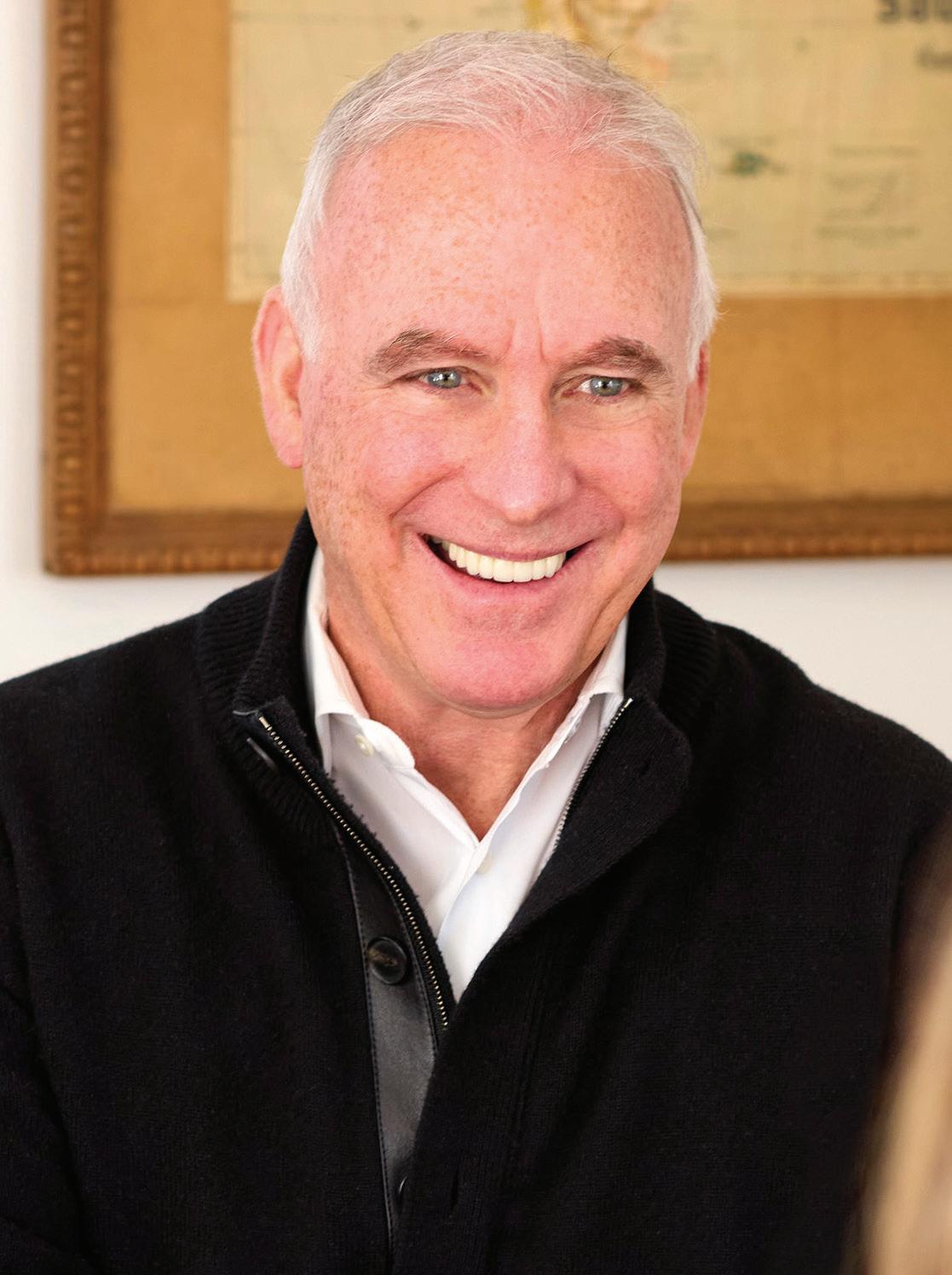


INTRODUCING APRIL BUYING WEEK APRIL 1– 4, 2025
Source footwear, accessories, gift and lifestyle brands all in one destination this April in Atlanta. From casual to formal and spring to fall, complementary product lines and endless inspiration, this new comprehensive market has it all. Plus, enjoy happy hours, trend displays, giveaways, and more to make your sourcing trip fun! Learn More at AmericasMart.com

because the brand at the top of our pyramid is phenomenal and has been for 200 years.”
It also helps to have a solid reputation for treating retailers fairly, he notes. “This is a people business, and we genuinely care about the individuals we do business with—just like we care about our consumers,” he says. “That goes all the way back to our Quaker roots. We’re a people-oriented brand that treats everyone fairly and equally.”
Another reason Champion believes Clarks is poised for a growth spurt? He’s seen it before— during his previous 25-year run with the company. During that time, he rose through the ranks, from human resources newbie to senior vice president of sales. Champion and then-CEO Bob Infantino assembled one of the most well-oiled comfort companies in history. The North American division regularly eclipsed $1 billion in annual sales toward the end of that run.
Champion believes much of the foundation laid during that era remains intact, albeit weakened somewhat by leadership changes and the pandemic since his own return to Clarks in 2016. Things are stabler now, he says, as the company enters its second year under the majority ownership of Viva Goods (the remainder is held by the Clark family) with a new executive committee of company board members at the helm. “All the divisions are aligned, and there have been no big swings in direction like there were before,” Champion says. “Our committee has brought even more clarity to the delicate balance of being both a global and a regional brand. We’ve gotten a lot of complexities and costs out of the business while adding a lot of efficiencies this past year.”
The focus now is on growing the business, and Champion sees plenty of white space, like athleisure, as well as reclaiming brown space it once dominated. “There is no limit based on the strength of our brand,” he says. “It starts with rebuilding the foundation, which we’ve done. Now it’s about adding the building blocks for growth.”
Champion has high hopes for one block in particular: a product breakthrough in the athleisure category that will debut late this summer. Without giving too much away, he describes it as a premium product that approaches the athleisure world in a Clarks way and will carve out a space in the marketplace that the brand can own. “It’s the first step to announce who Clarks is in athleisure. Then it’s about growing the category from there,” he says, adding that the 200th anniversary provides ideal synergy for the launch.
“Clarks is a cool place to be right now,” says Champion. His goal is to make the most of it by helping the brand regain what he sees as its rightful position as a leading comfort lifestyle brand. All the prerequisites are there—a 200-year track
record of quality shoemaking, iconic styles as relevant today as when they were introduced decades ago, widespread recognition among consumers. And who better to spearhead that effort for the brand in North America than a man who lives and breathes Clarks’ people-oriented values and boasts the broad industry knowledge and connections to navigate today’s competitive and unpredictable industry landscape?
It’s also personal for Champion. “I’m at a stage in my life where I’d like to leave a meaningful legacy and culture behind,” he says. “It’s a reflective time, and I can turn that into positive energy to help move Clarks forward.”
Champion is convinced that Clarks will live on
for decades if nurtured and managed properly. And he relishes the opportunity. “That’s what jazzes me up every day, especially now that the headwinds are out of the business,” he says. “Now comes the fun part: rallying the team around our strategic vision to grow this business. It’s on us to take full advantage of the Clarks brand and the many opportunities in the marketplace.”
Happy 200th anniversary. Most everyone knows the name but how would you define Clarks today? Clarks, first and foremost, is a casual comfort brand. That is the heart of our business. We can’t forget that, and we need to feed it from the value end on up to premium. Clarks is also a democratic
What are you reading? I’m deep into Breaking the Habit of Being Yourself by Dr. Joe Dispenza. And I just cracked open The Ride of a Lifetime by Bob Iger, CEO of Disney.
Have you broken any habits? Working on it. The book is about the connection between energy and matter that you can control through meditation. Essentially, it’s putting positive thinking into action to change your life for the better. Daily habits can become grinds, and you need to approach them in a di erent way to get out of that cycle.
What is inspiring you?
Personally, it’s taking all the experience that I’ve gained over the years and the people who’ve influenced me and figuring out how to channel that into my daily life. Professionally, it’s developing ways to get our company vision across to our stores, wholesale partners, and in-house team through collaboration. There’s plenty of information and talent in this company. So, rather than thinking, ‘This is my responsibility, and everyone get
out of my way,’ we are pulling together to make decisions to move us collectively in the right direction. That’s inspiring.
What superpower would you most like to have? Reading minds.
Who has had the greatest influence on you? It’s hard to pick just one. My wife, who I’ve been married to for 46 years, has been very influential in how I’ve evolved as a person. Professionally, Bob Infantino (a former president of Clarks North America) was a great influence in the way he handled people, looked at product, and studied the market. I met him at an early stage of my career when I was thirsty for that kind of knowledge. Another was Michel Meynard, who ran Earth Footwear. Man, was he creative. His way of approaching design and consumers was totally di erent from Bob’s, but they both got to the same place of success. I learned so much from them.
What keeps you awake at night? Nothing. I sleep really well. If I can’t handle it during the day,
there’s always tomorrow.
What are you hopeful for? With the election over, I think there’s a great opportunity for our country to start working together, find compromise, and move in the right direction. I’m hopeful we find some middle ground.
What would you like to be reincarnated as? A human, just not in a country in turmoil. It’s interesting how we evolve, and I’d love to go through this life experience again.
If you could live in another time, when would it be? I’d love to be dropped into the time when we were settling this country. It’d be fascinating to be one of those pioneers.
What was the last series you watched? Landman starring Billy Bob Thornton. It was interesting, and what a great actor.
What would the title of your life story be and who’d play you in the film adaptation? The Will to Change, Adapt, and Succeed Kevin Costner.

brand with a diverse product offering and equally diverse consumer base. Few brands have as much elasticity, which stems in part from the consistency in our brand DNA and culture. People around the world know and trust what they get from Clarks, which is delivering tremendous value in terms of quality, fit, comfort, and style. It’s that Quaker approach that has been part of us for 200 years. Our people-first values have played a leading role in our longevity.
Any examples of how those Quaker values come into play internally?
Every person counts. Every person has a voice. We have an open-door policy. If you have an idea, you’re welcome to share it. Collaboration is key. There’s no punishment for making a wrong decision. Just learn from it and move on. It’s a people-oriented philosophy similar to how Quakers believe in treating all people fairly. That’s why we’re such a democratic and diverse brand. Our region sells about six million pairs of Cloudsteppers each season and we sell a ton of Originals at the other end of the spectrum as well as a whole bunch in between. Consumers can trust that Clarks makes their feet feel great, and that extends beyond just comfort underfoot. It involves having the right last, stitching, construction, etc. so there is no disruption to walking. There are many categories within that we address with this premise, be it dress, casual dress, casual, boots, athleisure, sandals, etc. It’s about interpreting our brand DNA into all those categories, and we possess the knowledge and experience to do it.
It sounds like a lot of work. It is. But, like I said, we’ve been doing it successfully for 200 years. That’s a long time. Our mission going forward is to do more of the same, serving our established base of consumers while introducing and reintroducing consumers to our brand. It’s a balance. For example, we have a huge casual business with a loyal consumer following that generally likes like the way we’re designing those shoes. So how do we move them along with the trends but not lose them, while also attracting new customers. When we think of design, we think of speed, which is how fast can and should we get. That way we build the same level of trust and expectations with all our consumers. There’s a big white space of consumers who may have or haven’t heard of Clarks but currently aren’t wearers. We’re going after them.
It helps that Clarks already has a loyal following at both ends of the age spectrum, no? It is rare, and Originals continues to perform well. We have a lot of excitement around that brand through collabs with Kith, Adidas, and various artists and other boutiques. We have handful on deck this year to make some noise around our anniversary. Overall, our team is doing a great job understanding that top tier customer. What’s also happening is a growing interest to take some of our Originals design elements to appeal to a broader youth audience that shops chains like Journeys, Snipes, PacSun, Free People, and Urban Outfitters. Originals might be cost-prohibitive for some, or they like the general

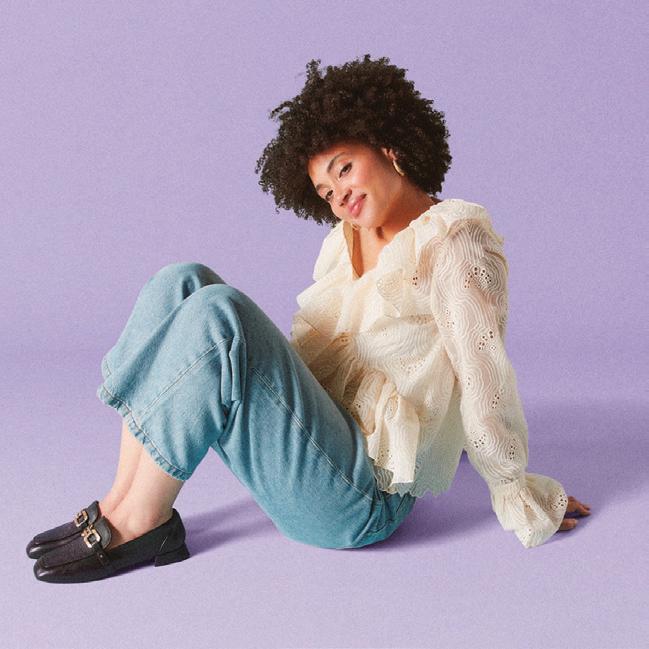

but also how we celebrate the milestone internally. A lot of events will be coming to fruition over the course of this year. We want to make sure that our team around the world understands what makes Clarks special. As far as business is concerned, one goal is to start aggressively growing our top line again. We got away from that story the past few years. But we have some interesting innovations coming back into the segment. Dawn Porto, our global head of product, has done a great job getting the right people underneath her that understand innovation, be it small aspects or entire collections. She’s been with Clarks for more than 30 years and has a clear view about what the brand is and who our consumers are. Another goal is building a story around our 200th anniversary and how it ties into our brand today. It’s a story about strong shoemaking capabilities and how we deliver quality, comfort, fit, and value at every price point. That’s what has kept us alive for 200 years. It’ll be told through social media, PR, and in-store. We want sales associates to talk about our 200 years of shoemaking, because we’ve learned a lot over that time. Clarks even made high heels back in the day in the UK. So our path to what got us here and what we’re all about is really interesting. The key is to tell our 200-year history concisely and powerfully.
What are some of the biggest challenges Clarks is facing now?
look, but they don’t want the crepe sole. So we’re in the process of building out our Evo brand into a more commercial distribution. We currently have Evo versions of our Torhill, Wallabee, and Desert Boot without crepe soles. It’s a cool, youthful look at a more moderate price point. It’s also a totally different distribution than athleisure.
What are your goals for 2025?
We’re taking full advantage of this being our 200th anniversary—not only to our consumers and retailers,
It’s getting harder to trade. There are less people to trade with, and there’s more competition in the industry. So we have to be really focused on who we’re after and how to go about doing so correctly. It helps to be a brand that’s already known and trusted, regardless of whether we have that consumer yet. Despite all that, it can be done. Look at the rise of Hoka and On over the past few years, for example. About 90 percent of that segment has been owned by three or four brands. Now there are brands taking meaningful chunks out of their share. Likewise, there’s an opportunity for Clarks to grab a share—in a way that speaks to our brand. We have to carve out a piece, because athleisure isn’t going anywhere. Another challenge: it’s harder than ever to capture the consumers’ attention amid the media onslaught that they’re facing on what seems like an hourly basis.
Do you sense the pendulum has swung so far to the sneaker side that consumers just might want
to wear something else occasionally? This whole athletic push came out of 2020. While sneakers aren’t going away, I think there’s a growing number of consumers asking themselves whether they want to wear sneakers everywhere they go. They want to wear different outfits, and nonsneaker styles go better with those. I see less yoga pants being worn everywhere than I did three years ago. This shift is also part of the success behind Originals, where we’ve been seeing consistent growth. There’s been a bunch of articles written in streetwear publications of late basically saying these are your next sneakers. Those consumers are also thinking about style alternatives outside of the sneaker world. How quickly that expands, who knows. But I sense a movement starting. Regardless, our job is to get consumers to think about alternatives to dressing that is more in line with our products and heritage. That’s what we’re trying to unlock now—casual styles that still feel like a sneaker.

The overriding factor to any challenge is fewer stores means it’s just harder to get on shelves. It is for a lot of brands. But that’s where we lean on the strength of the Clarks brand. For example, we’ve always done a nice job with Journeys because of our Wallabee and Desert Boot icons. But Dick’s Sporting Goods, Foot Locker, Bass Pro Shops, and PacSun… we haven’t always played in those worlds. I believe we have the brand recognition and capabilities to do that. We need to capture some of their open-tobuy with the right products, like Evo and our new launch coming late this summer, that we expect will generate sales that we can then build upon. It’s a challenge, but we’re working hard on it. It sure helps to start with a brand retailers and consumers at least already know and trust.
Brands oftentimes can gain market share not so much by what they’re doing right as much as their competitors are doing wrong. Agree?
Absolutely. Clarks’ initial build in North America was primarily due to the failures of Rockport. The open-to-buy that we captured along with the way we treated our retailers and what we delivered to consumers started clicking. We had a team of people that understood why, and fed that season after season. And the stronger we got, the weaker our competition got. That can happen again as not every brand is firing on all cylinders.
Is there room for meaningful growth within the comfort specialty channel?
Yes. One of the areas that was hurt most through all
this leadership changeover at Clarks over the past several years was our premium offering for independent retailers. We’ve spent a lot of time and effort rebuilding that segment. Our Artisan sub-brand focuses on that, which is aimed at consumers primarily in their thirties who grew up wearing sneakers and are seeking alternatives for their wardrobes. Perhaps they wore our crepe sole classics in their youth but left the brand as their lives changed. We need to get them back by offering styles that meet their current tastes and needs built with our DNA of quality and comfort. I should note, though, the independent base has shrunk since 2020, which makes growth even more challenging. Our territory managers now cover five to six states when it used to be two to three to reach a similar sales volume because of the weaning out in that tier. Still, some powerful independents remain and who mean a lot to us.
I get an overall sense that 2024 was more challenging than even some of the pandemic years across the industry. Would you agree? It was a messy year, for sure. There were months where we did well and months that weren’t so hot. Overall, it was hard to trade in 2024. The election and the economy affected how consumers spent.
Spending more on household staples and less on shoes?
Most athletic companies, aside from Nike that had internal issues, had a good year. But consumers shied away from other styles. It’s still hard to get people back into offices five days a week. So do
they need office-appropriate styles? Can they wear sneakers to the office now? Do they just wear slippers around the house? It was just a struggle to get business running consistently. It’s why we focused our attention on cleaning up the overhead side of our business. We zeroed in on every line item to see if we could get unnecessary costs out. That helped us get through the year in a decent way from a profit perspective, which was a little over 2023. We now have clarity in how we’re running the business.
Better days ahead?
I sense a collective weight being lifted. There’s a sense of optimism in the marketplace and about the overall economy that could move the business forward. More so than last year, at least. Actually, we had a decent fourth quarter that continued into January. Our Macy’s in-store sales were up 24 percent.
So is the glass half full, or is there a hole in the bottom?
Oh, I’m always a half-full guy. (Laughs)
Based on the challenges that you’ve endured over these past few years, both internally and externally, you might be the poster boy for optimism. Many others would have long checked out by now. Honestly, that’s part of the inspiration in my job. The inspiration isn’t about having to do it. I care a lot about this industry and our company. I want our employees and retailers to all succeed.
What are you most proud of?
Just that: protecting the Clarks culture that we’ve built to grow this business properly. We want to give every employee an opportunity to succeed—to have a voice, collaborate, and perform. My job essentially is to provide them the overall vision and direction, and take complexities out of that, to help them do their jobs. While we’ve gone through some turmoil over the past several years, our culture has remained intact. And the talent is here. As long as we have this great culture that everybody here believes in and understands what’s expected of them…that’s 80 percent of the win. The rest is execution. Every day I wake up with three items on my to do list: 1. Keep the vision going forward. 2. Bring clarity to the operation. 3. Get complexities out.
What do you love most about your job?
It’s always all about the people. I love managing and putting people in teams, having success, and creating opportunities for them to grow within our organization. That’s what I’m fighting for, and we’re all working hard on making it happen. •
On the prowl for leopard prints.


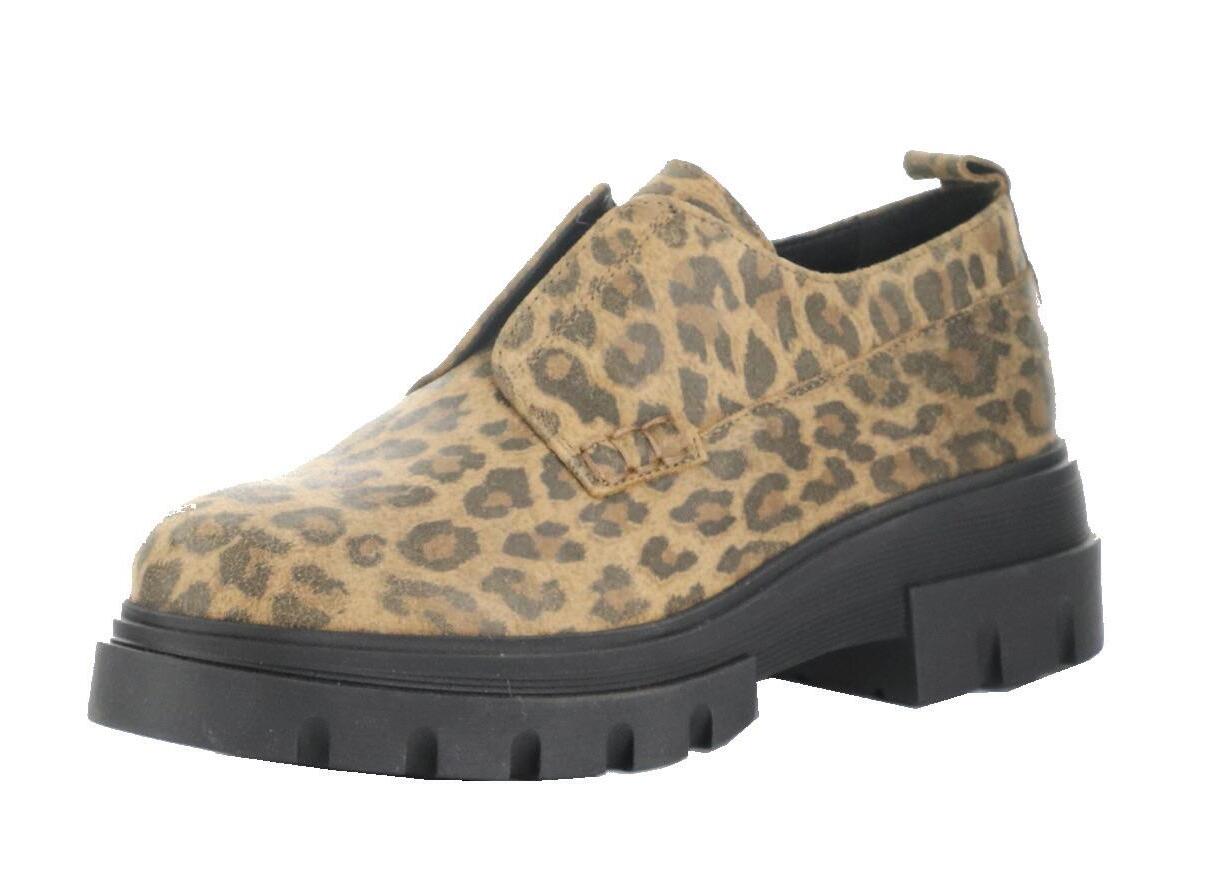





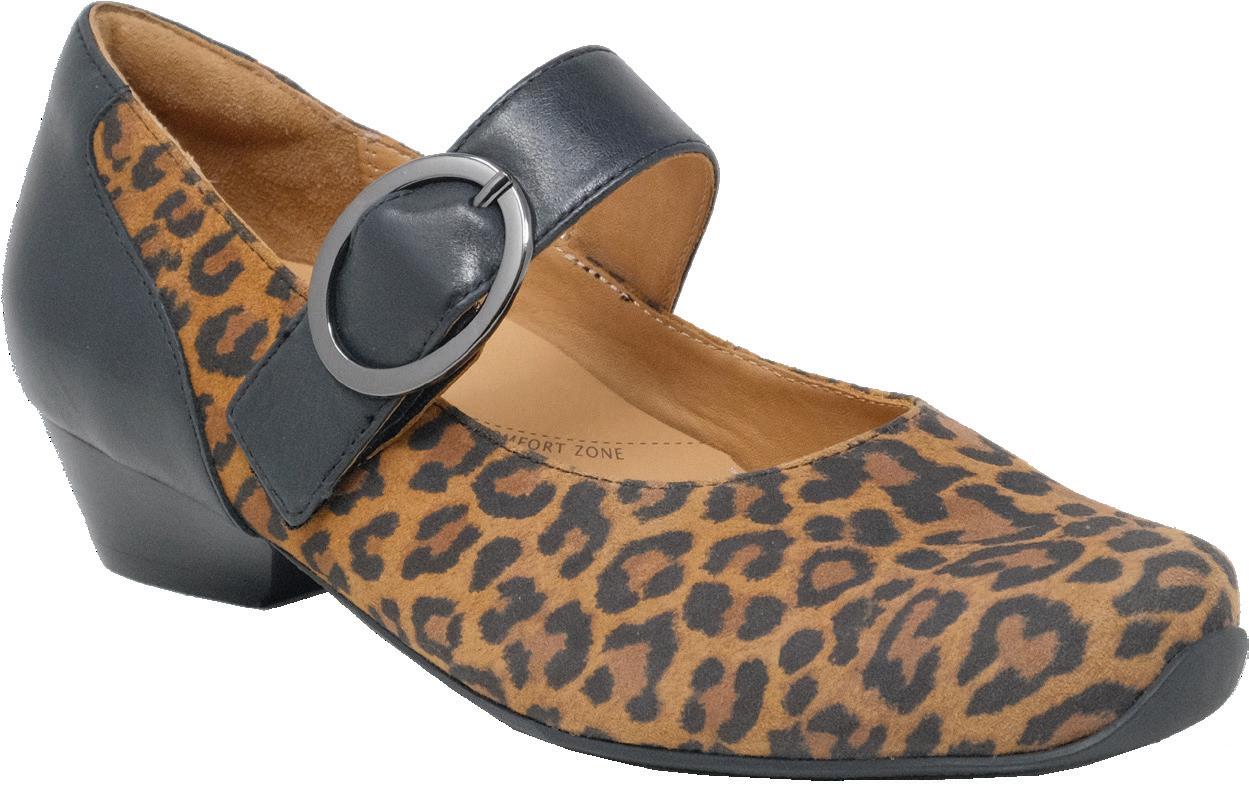
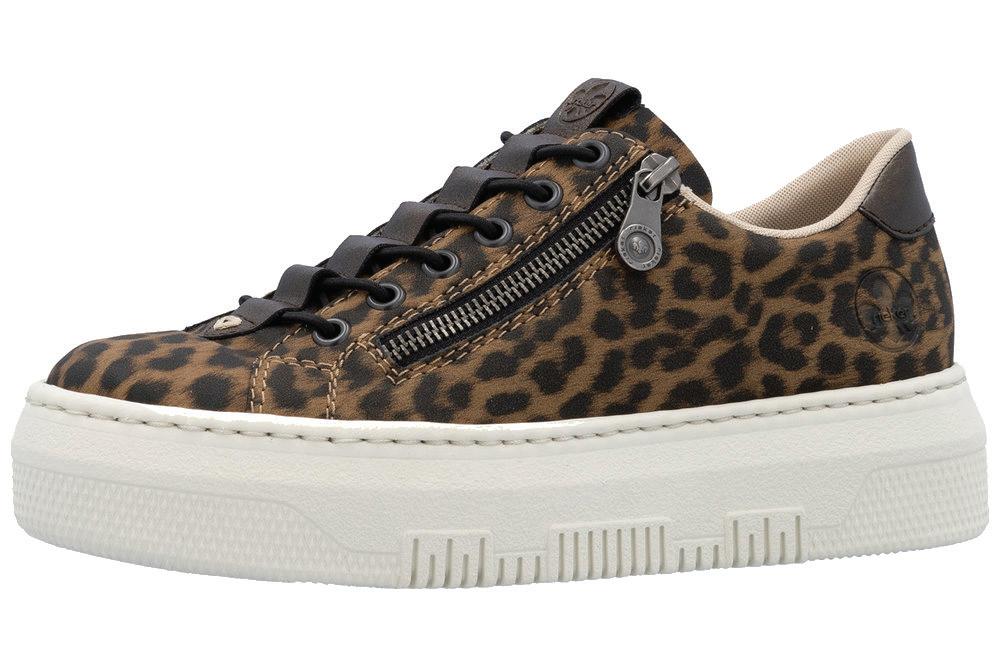






Go full cozy in sweater materials.

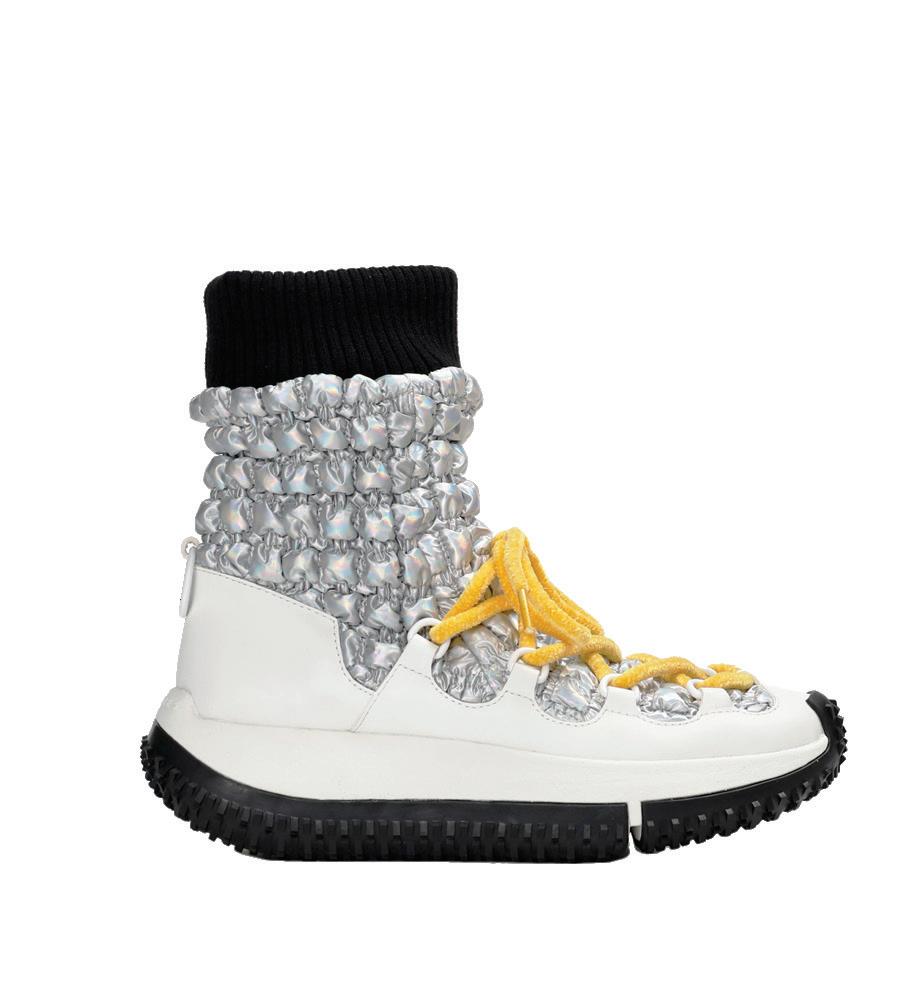
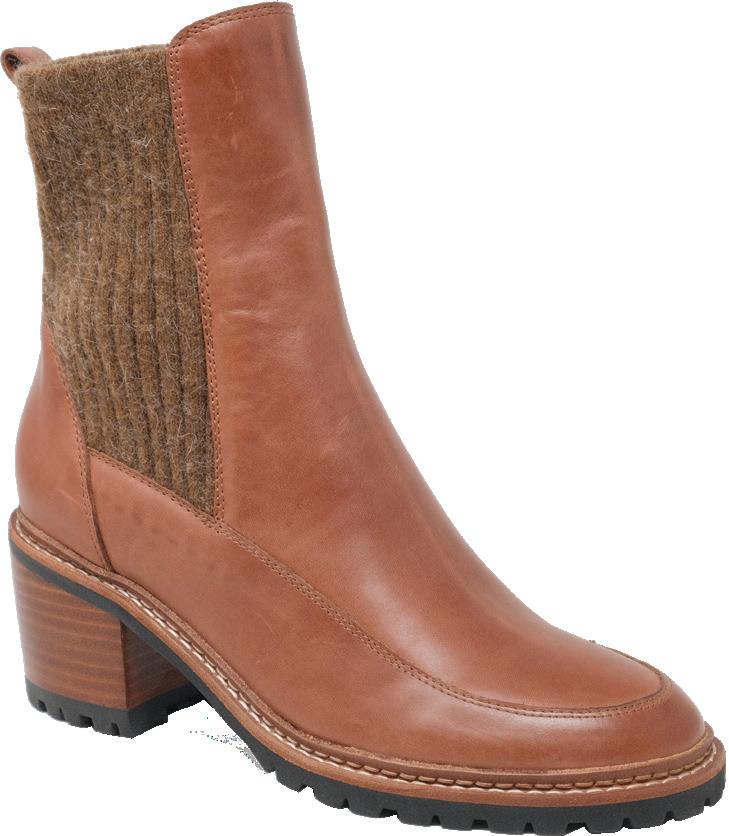
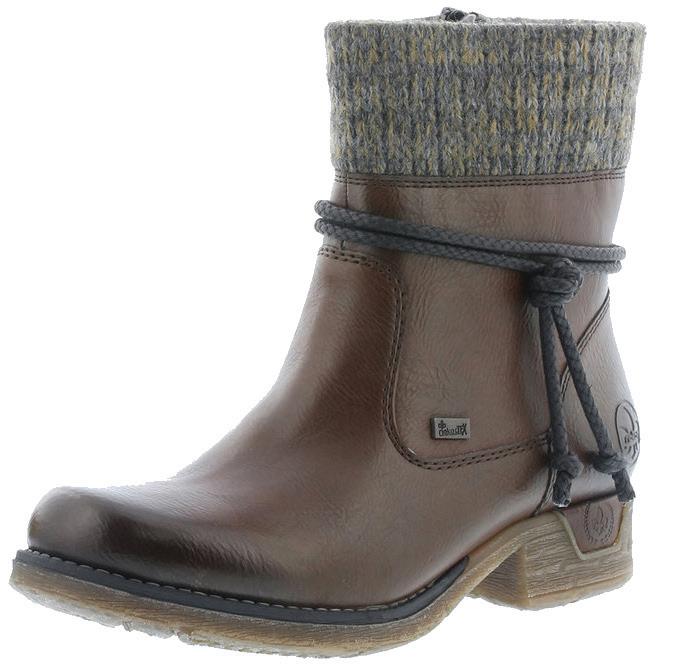



that should make you rethink everything: Up to 60 percent of your sales reps’ time is spent on administrative work. It’s also the reason many reps burn out. But they’re not the problem; your systems are. When more than half their time is wasted on manual work like entering orders and updating spreadsheets, they’re not selling. They’re drowning in busywork and it’s hurting your buyer relationships. What additional sales might you be losing as a result?
There’s a big myth in the B2B world that automation destroys relationships, but it’s really bad tech, outdated systems, and forcing your reps to spend an estimated 30 minutes of tedious administrative work for every deal that does. Your systems need to work for your team—not against.
For your sales reps, remove the busywork so they can stay focused on creating and improving customer relationships. Let them leverage personalized experiences, using great syndication systems to get meaningful product data to retailers when
CHRIS JOHN, CEO OF SYNDIC8, LAYS OUT THE QUANTIFIABLE BENEFITS OF HOW ITS DATA SYNDICATION SYSTEMS INCREASE SALES AND PROFITS.
they need it. When sales reps have time to anticipate client needs instead of juggling emails, that’s a relationship that flourishes.
Great systems and great data can also become incredibly powerful when paired with AI. For example, great data can be used to build a personalized layout of merchandise for shoppers, so when they enter your store, they’re much more likely to make a purchase—because you have that item, in the preferred color and needed size, in stock. Allow customers to buy the items they want—right then and there. In addition, the average B2B buyer is now younger on average and expects to be able to use technology to order items with maximum convenience. In the age of options, you often only get one shot to get them to purchase your product.
The more you fear new technology, the more you set yourself and your sales team back. Because great sales teams aren’t replaced by tech, they’re enhanced by it . Empowering your sales team with tech creates convenience and satisfaction, which fuels loyalty. The complexity of the marketplace and customer expectations are only increasing, and being on top of your data matters more and more. You have to act now or continue to lose revenue. With great tech and data in the hands of your sales reps, they’ll be better equipped to build trust and anticipate their client needs.
Syndic8 is great tech that moves the needle. We automate the busywork of managing, controlling, and distributing your data, and ensure consistent, clean data so sales reps and buyers have more time for what they do best. The best relationships don’t stem from endless back-and-forth emails. They come from systems that make life for both sides easier and more profitable. Syndic8 makes the selling process seamless and the buying process effortless—and that’s a win-win.
I invite you to contact Trisha Sweeney, our executive vice president of sales, to learn more about how Syndic8 can work for you. Trisha.Sweeney@Syndic8.io






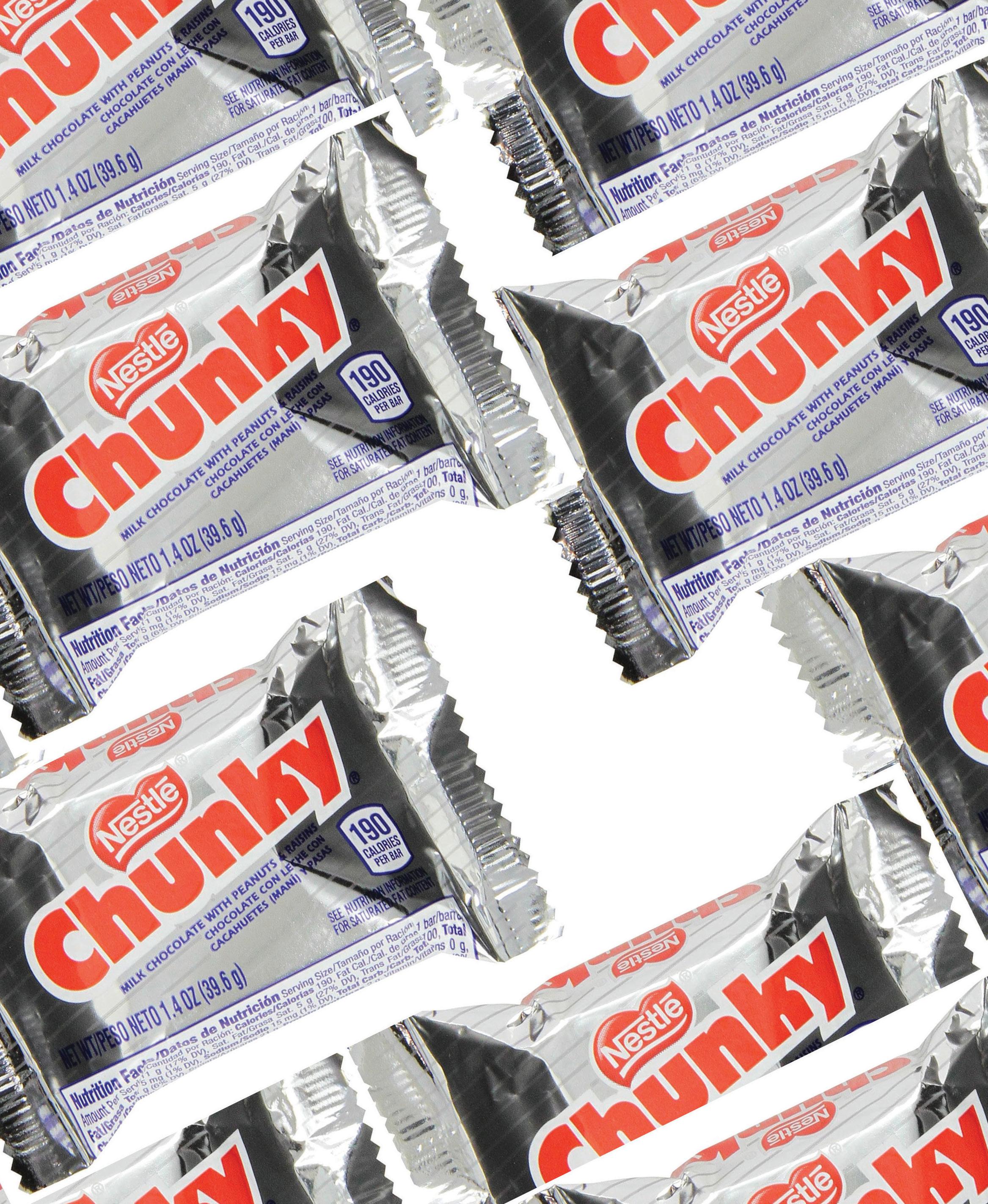
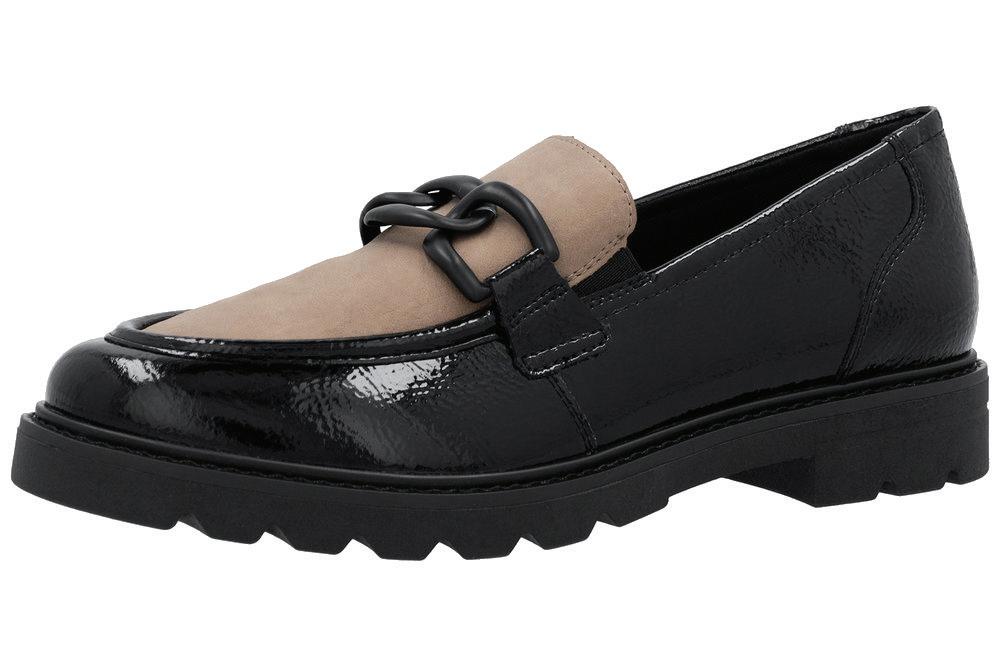

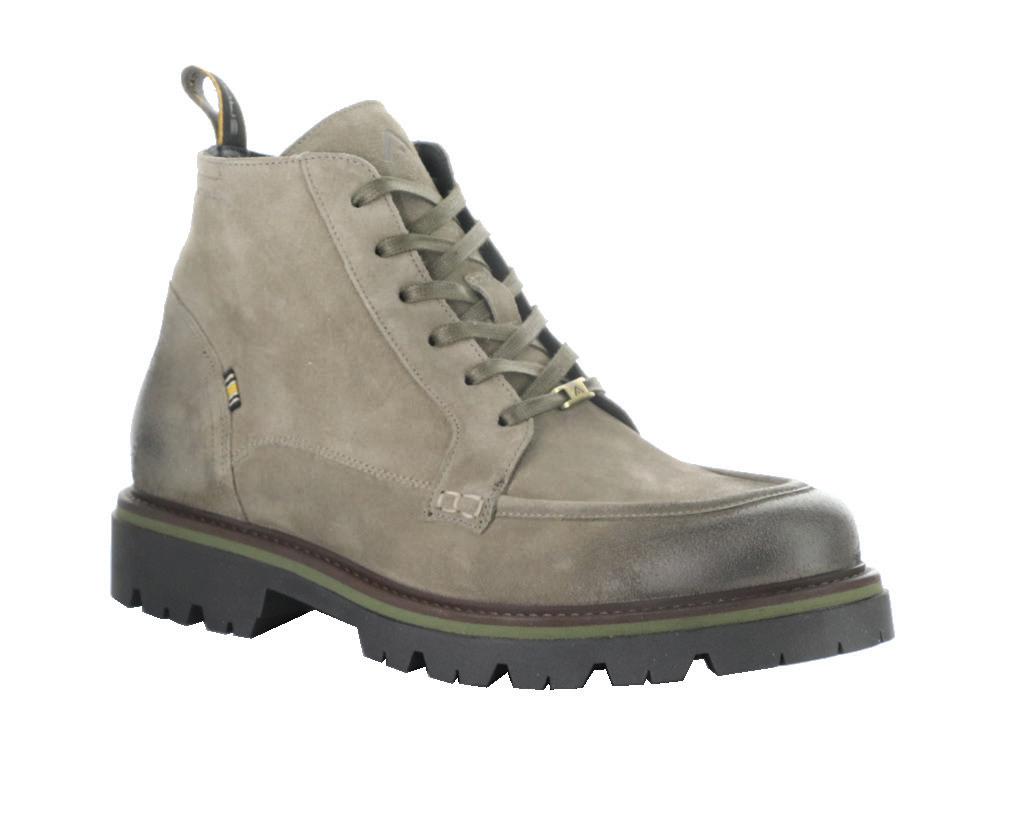

Guys transition from work to casual seamlessly in moc toe boots.





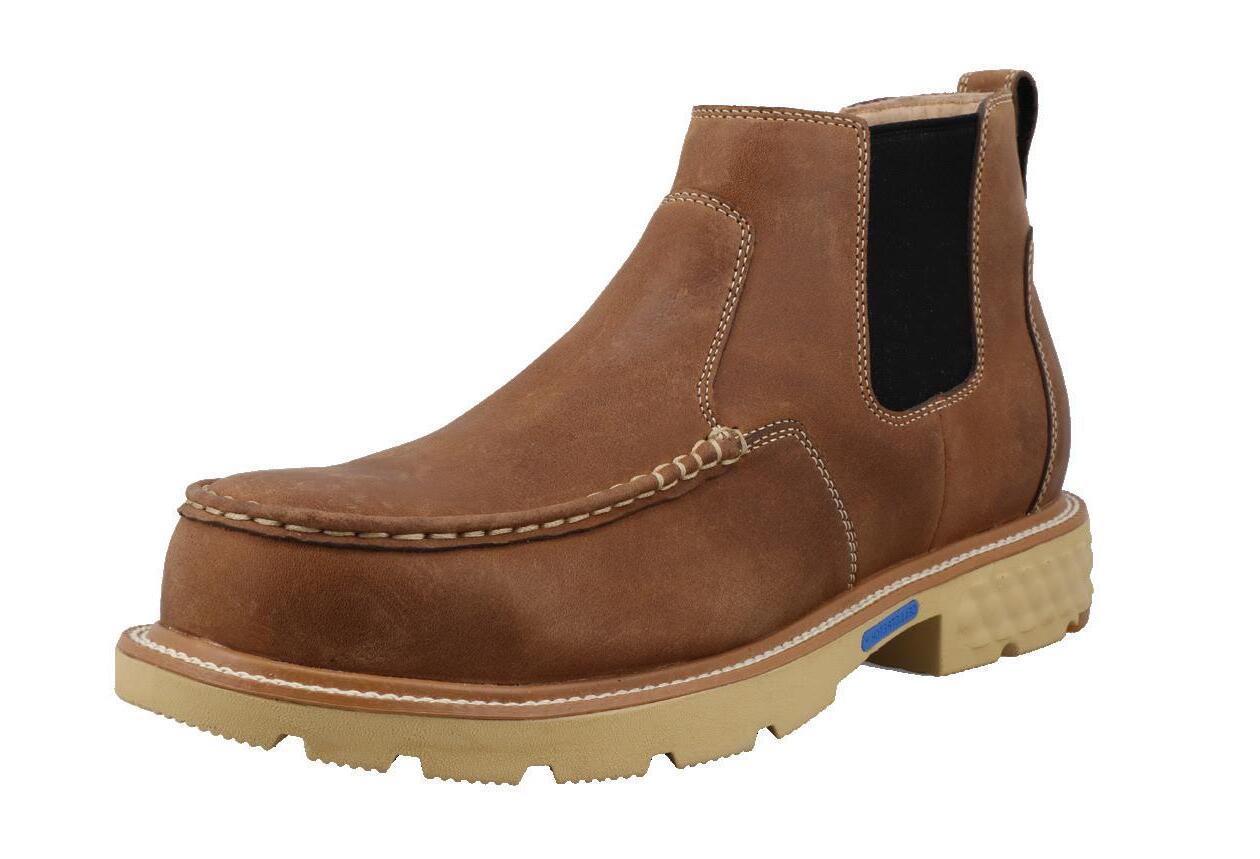

Stop people in their tracks with this racy hue.


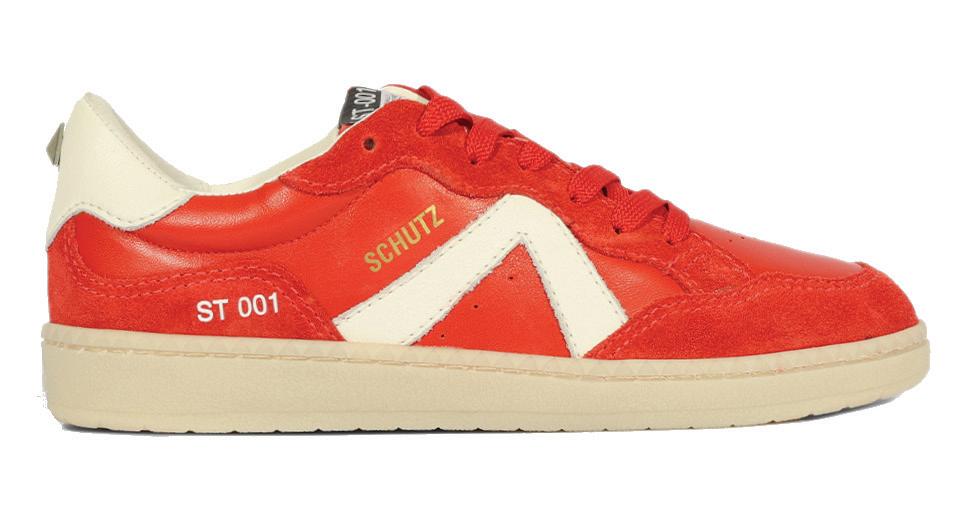

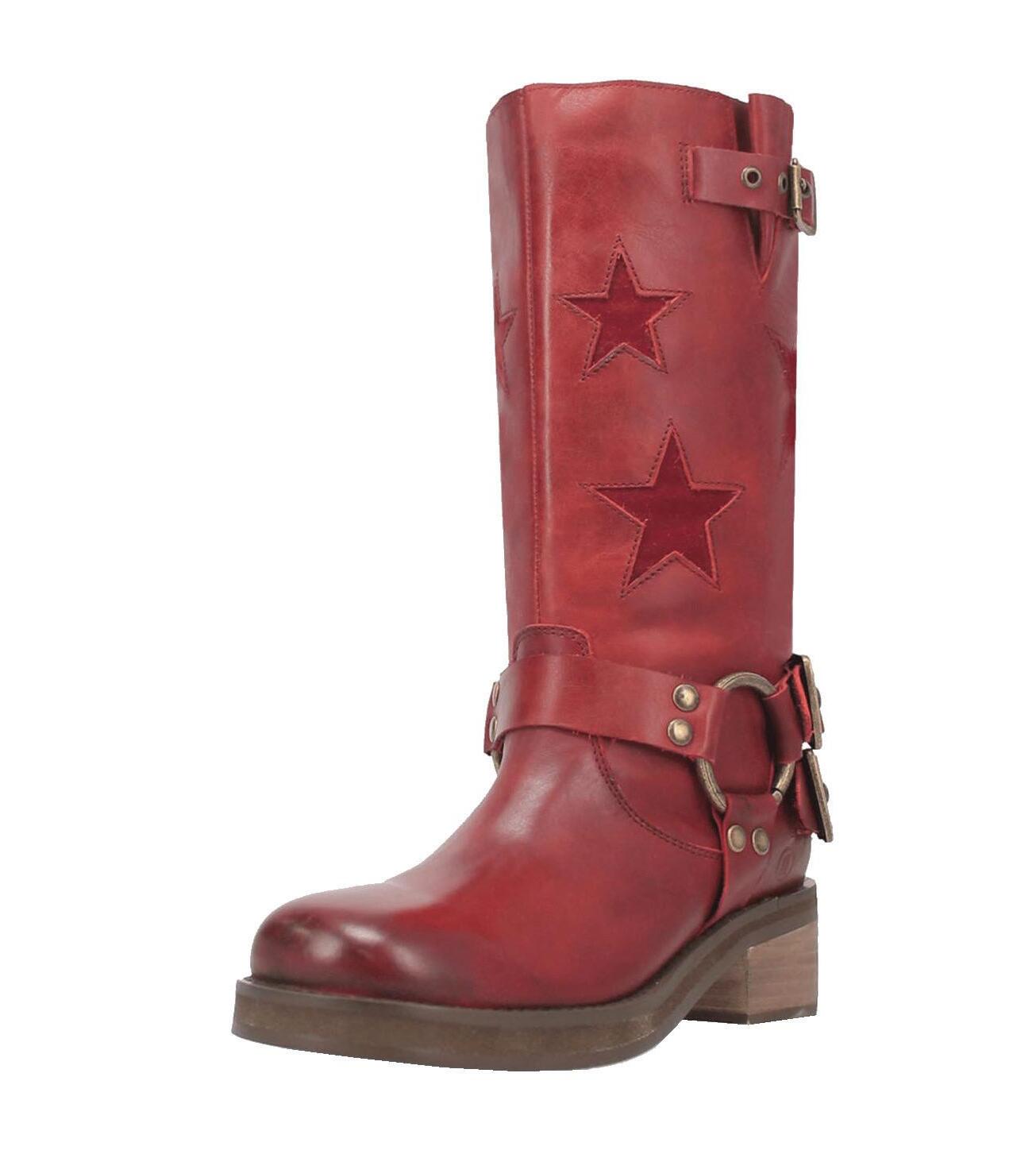
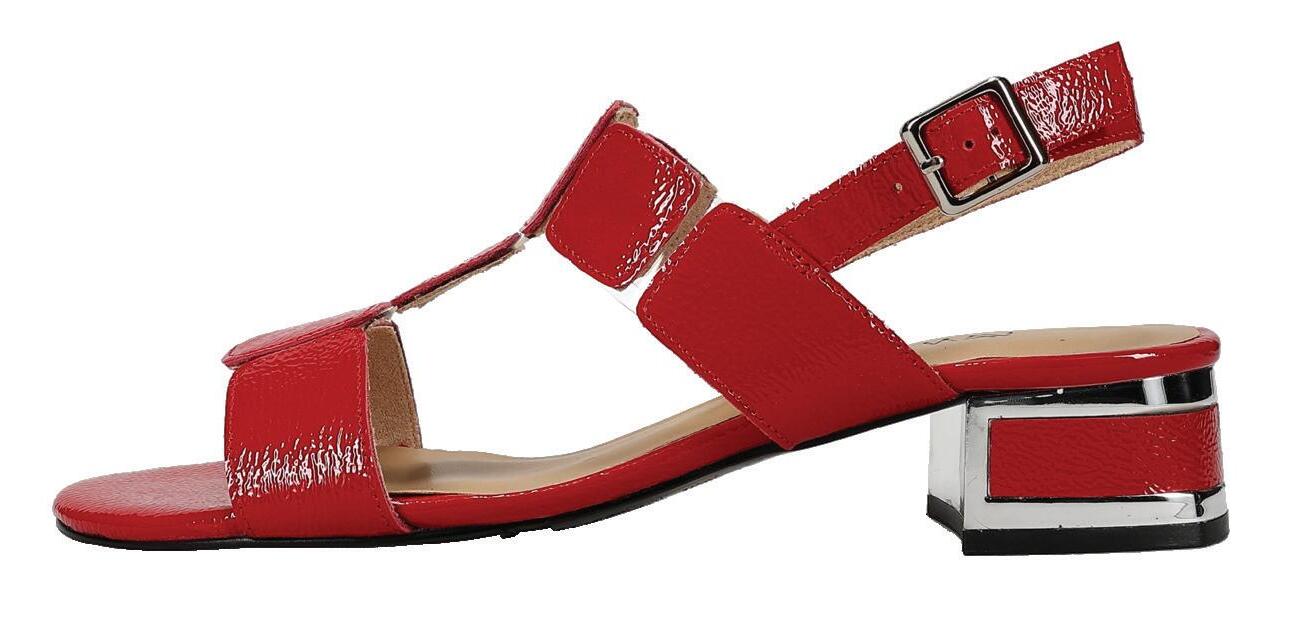





Mary Janes: the ideal match for any outfit.
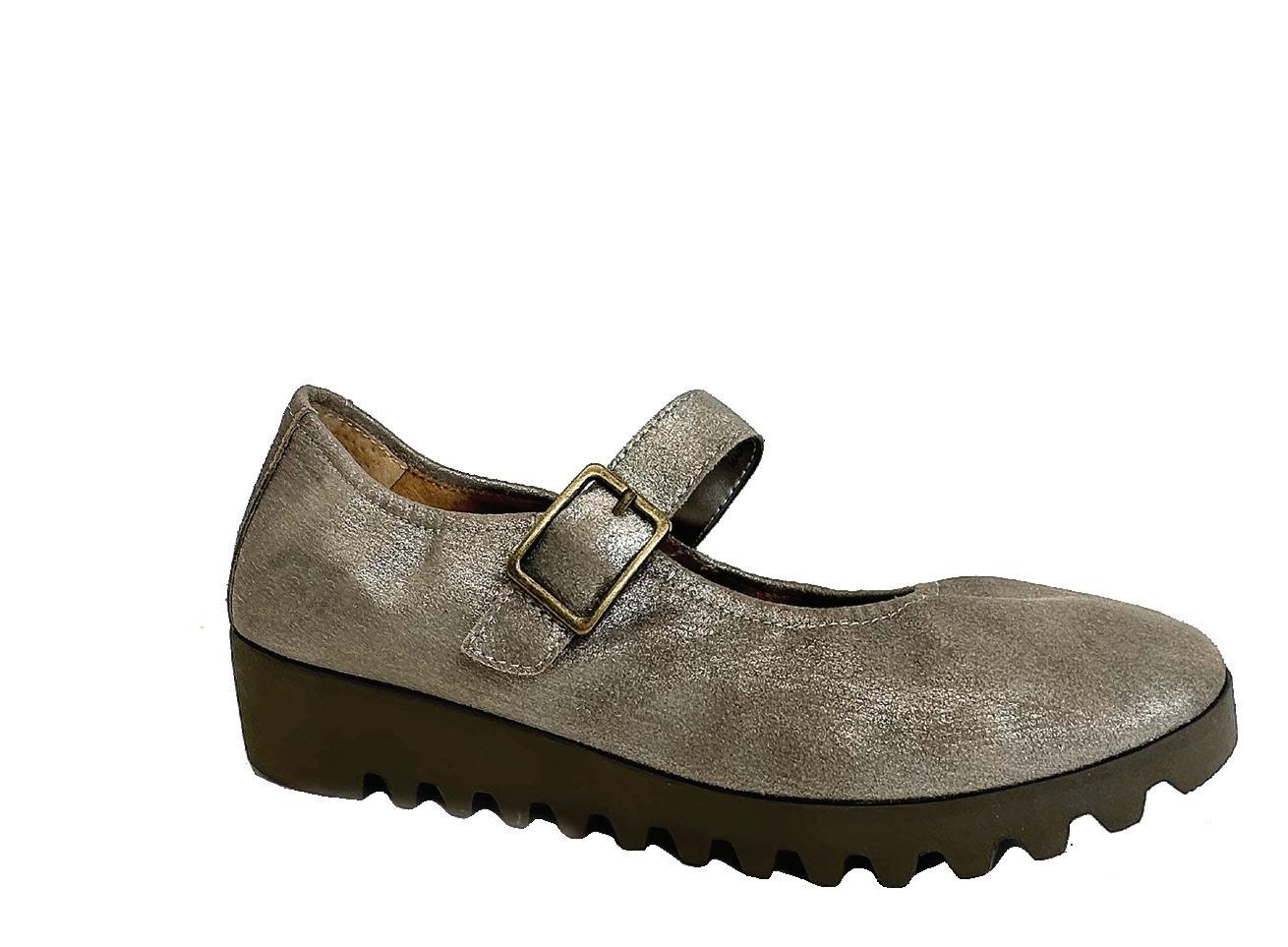


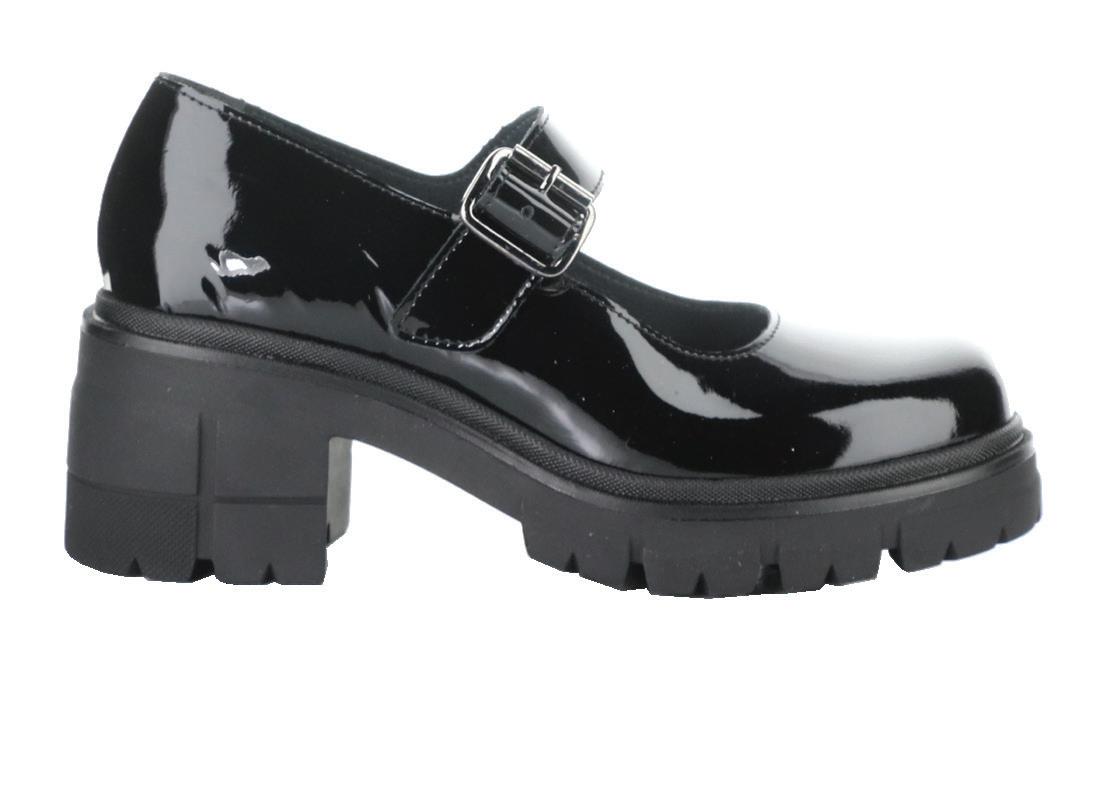

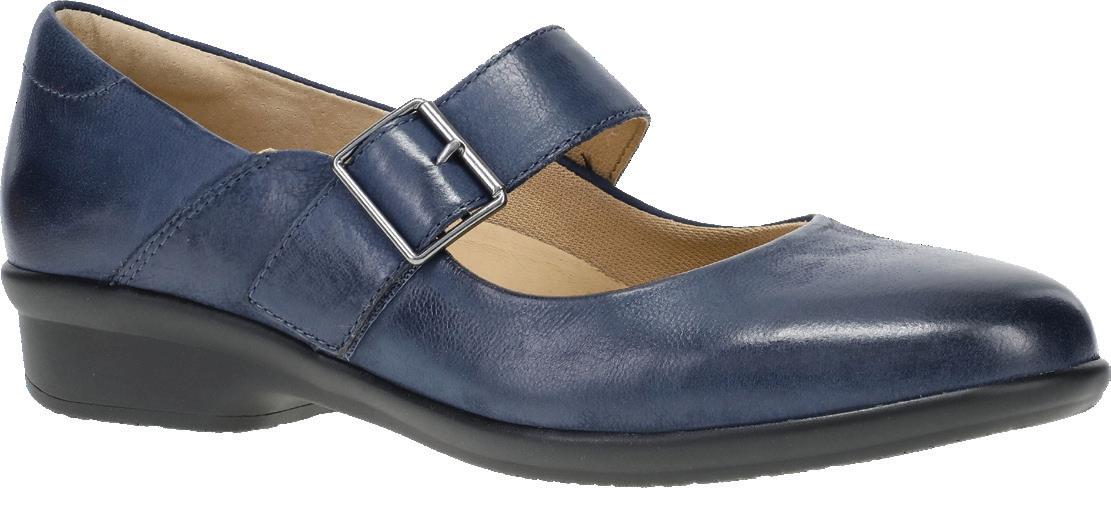

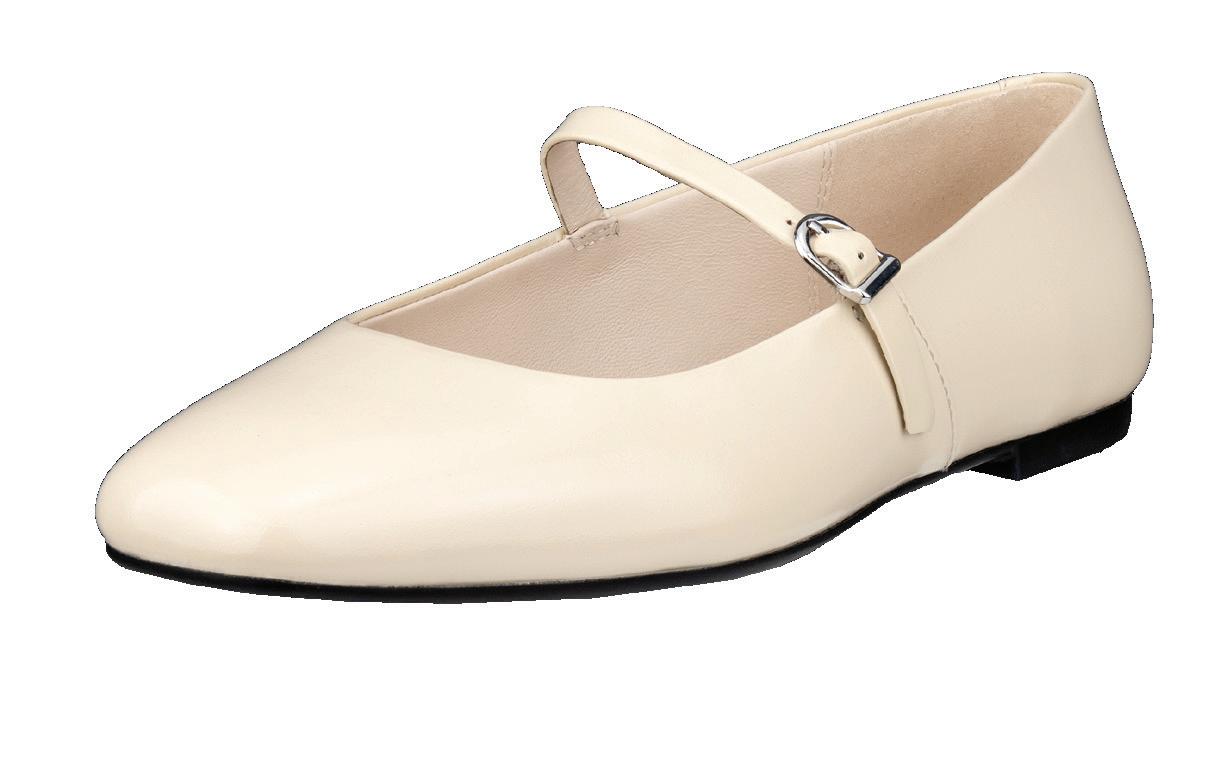




Croc prints rise to the surface.

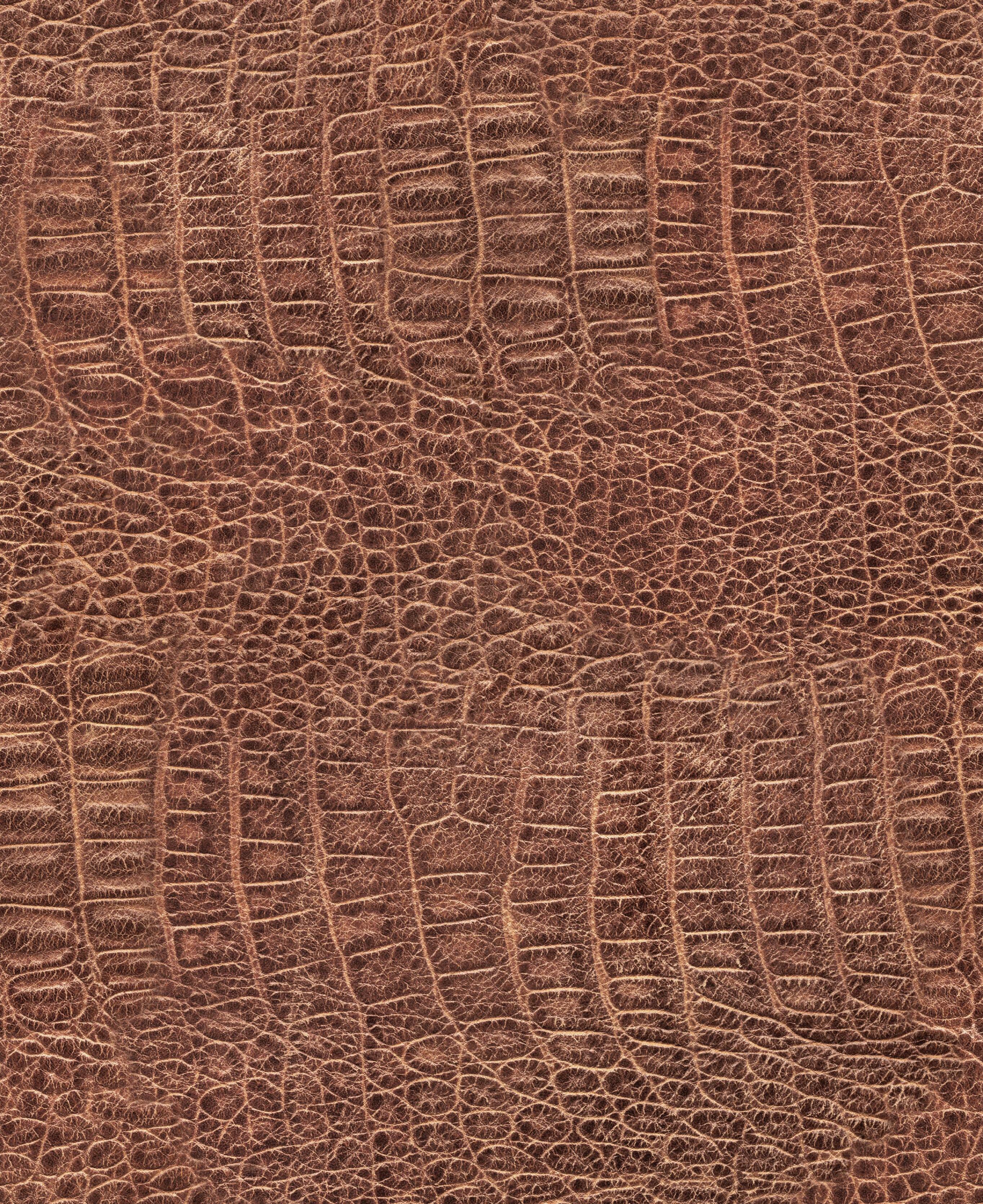





Be prepared, in style, for the whims of Mother Nature.


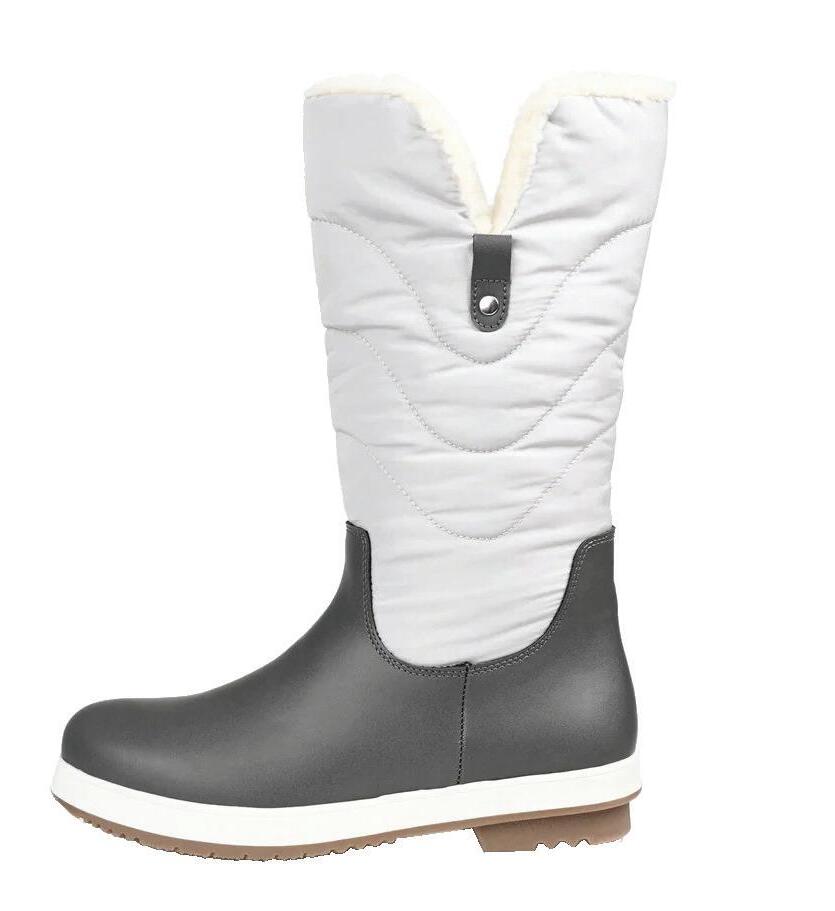



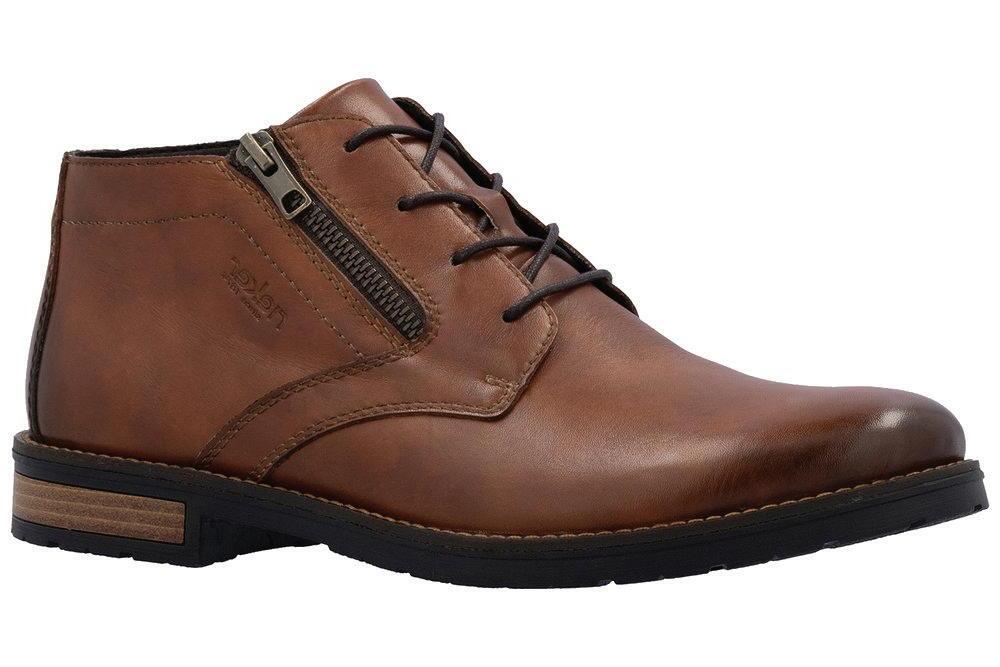


Office-appropriate styles worthy of a raise.







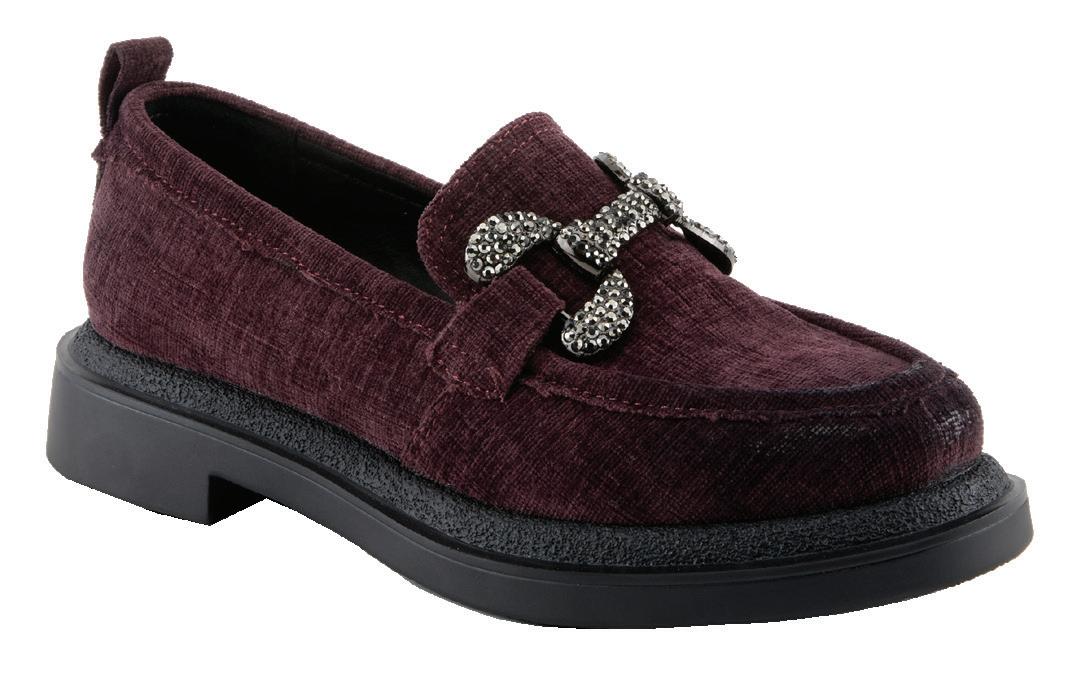
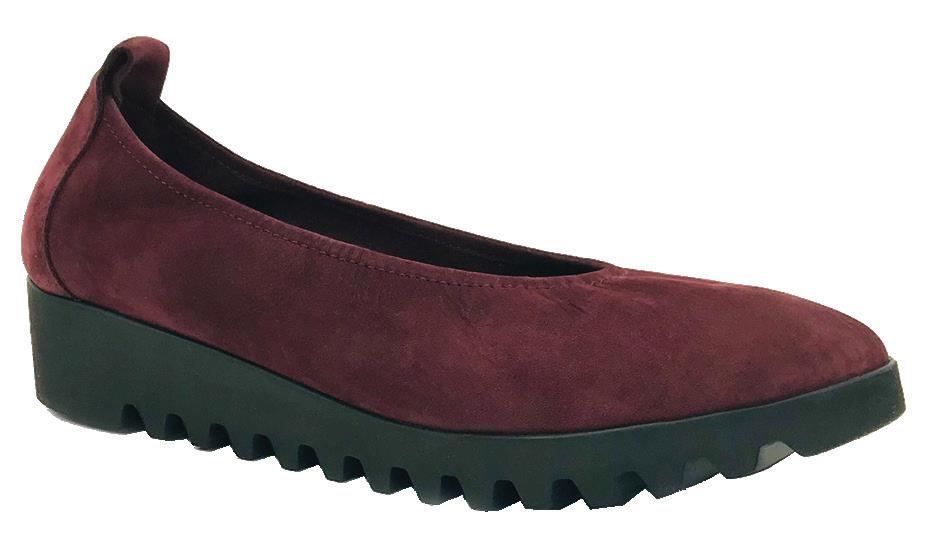






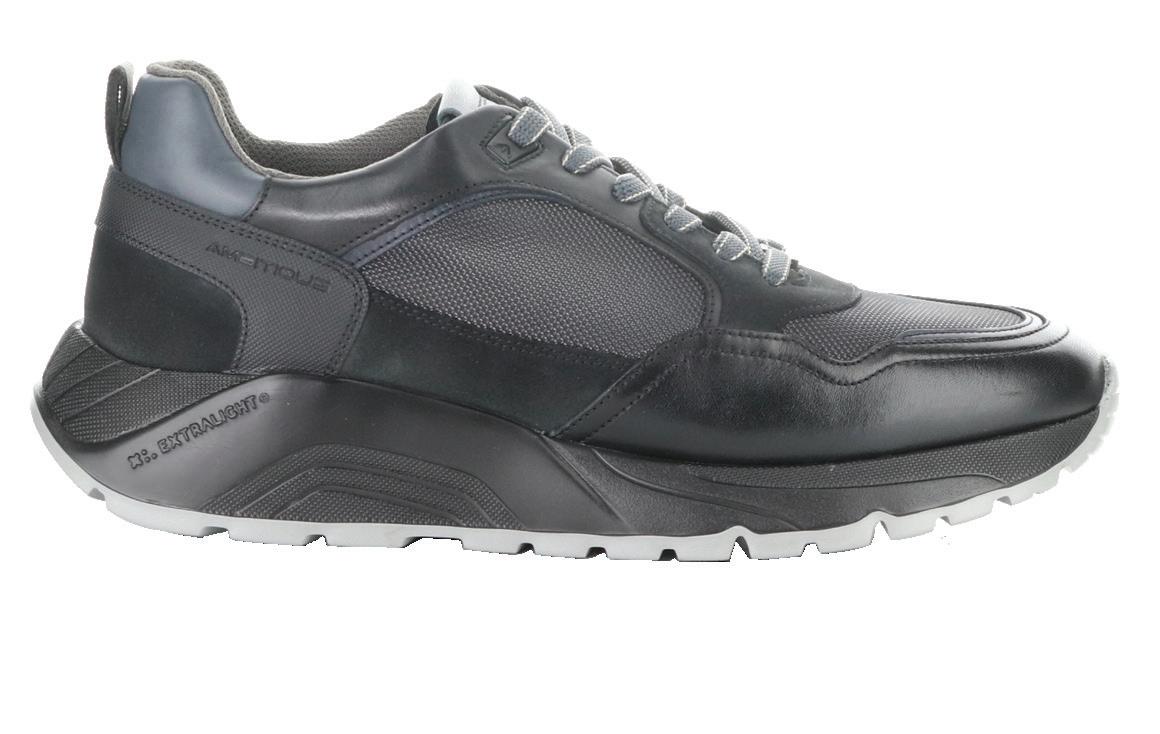

Max-soled joggers keep the pace.



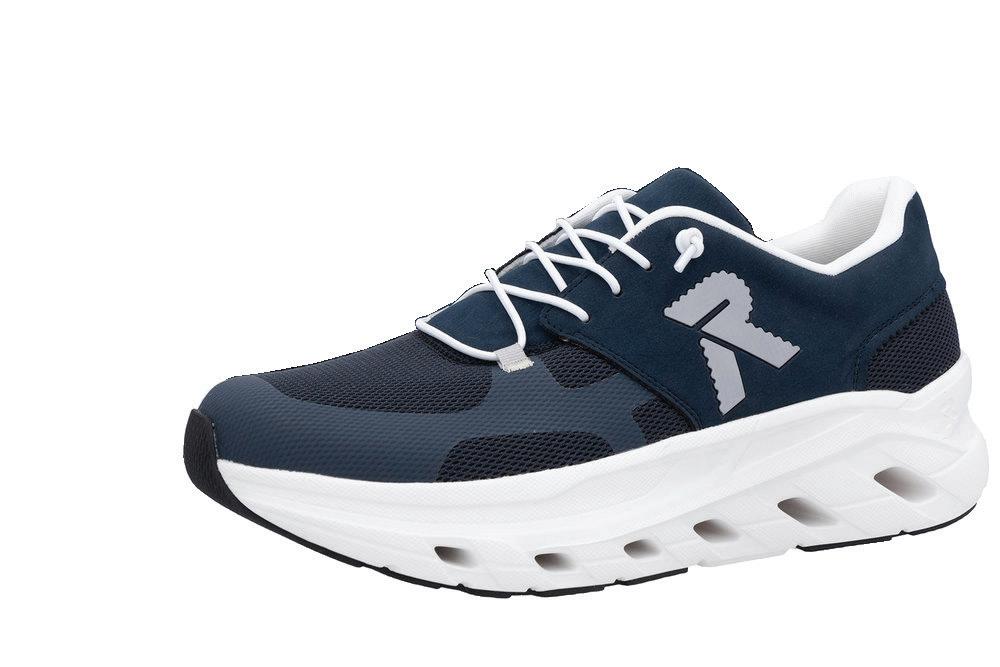

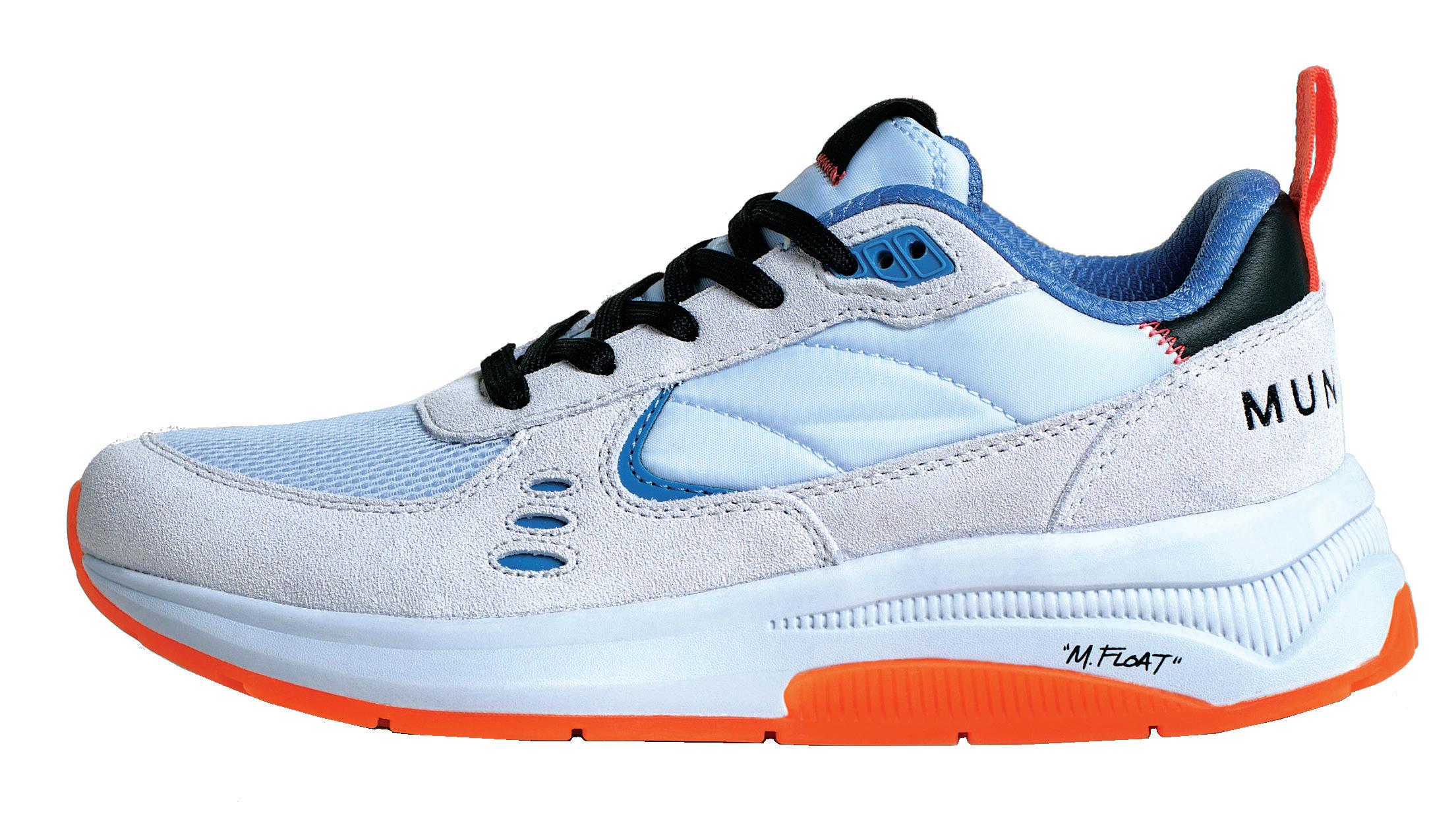

PIRATE-THEMED PARTIES? Ring dip challenges? Sneaker collabs with a local twist? They’re hardly run-of-the-mill retail experiences. But then Fleming’s Comfort Footwear is no run-of-the-mill footwear store. The second-generationfamily-owned Tulsa business, which turns 40 this year, has written its own success story by balancing a spirit of zany fun with a continually updated selection of high-quality comfort product and friendly, sit-and-fit service from knowledgeable shoe dogs who love their work and their customers.
Much of the store’s unique and often quirky approach stems from its owner’s creative mindset. Ryan Fleming, son of the shop’s founder, has been known to dress up as Footie the Elf for kooky holiday social media posts. He also draws from his background as a musician to write shoe-themed jingles and tribute songs that he posts on his store’s Facebook and Instagram. (“My Mephisto” to the tune of ’80s pop-rock band The Knack’s “My Sharona” is one example.) He’s locally famous for hosting in-store extravaganzas like a Star Wars–themed May the 4th event with Ara. Sam Spears, president of Ara North America, attended in a Darth Vadar costume, while Fleming dressed as Obi Wan Shoe-nobi.
“People look forward to the crazy events where we partner with brands. Those are our biggest days of the year,” says Fleming, who also teamed up with Ara on a pirate day, melding the brand’s name with the buccaneer catchphrase “arrrr.”
“Customers put the dates on their calendar and come in to take pictures with us. Some of them dress up for the occasion,” Fleming says. Newcomers stop in to find out what’s going on. “If you walk into a store for the first time and find people dressed like pirates on a random day, it’s hilarious,” Fleming says. “It’s a party.”
Not only do Fleming’s customers praise the shop as a “Tulsa treasure” and “the stuff dreams are made of” on social media, but vendors are equally complimentary.
Spears, who has been familiar with the retailer since his university days in Tulsa in the ’80s, calls Fleming’s “an amazing single-door owner-operator that punches way above their weight class.” He adds, “They set themselves apart from the pack with a very curated selection of all quite premium brands that are not necessarily typical for a comfort footwear store. Ryan doesn’t take himself too seriously, but he takes business extremely seriously. And he thinks way outside the box. He’s a real renaissance man.”
Ari Levy, national sales manager for Naot, agrees. “Ryan’s very creative, and he truly has a passion for what he does. Both his vendors and his customers can see this. He fosters a connection with both,” says Levy. “And he does some great social media posts. My favorites are when he plays his guitar.”
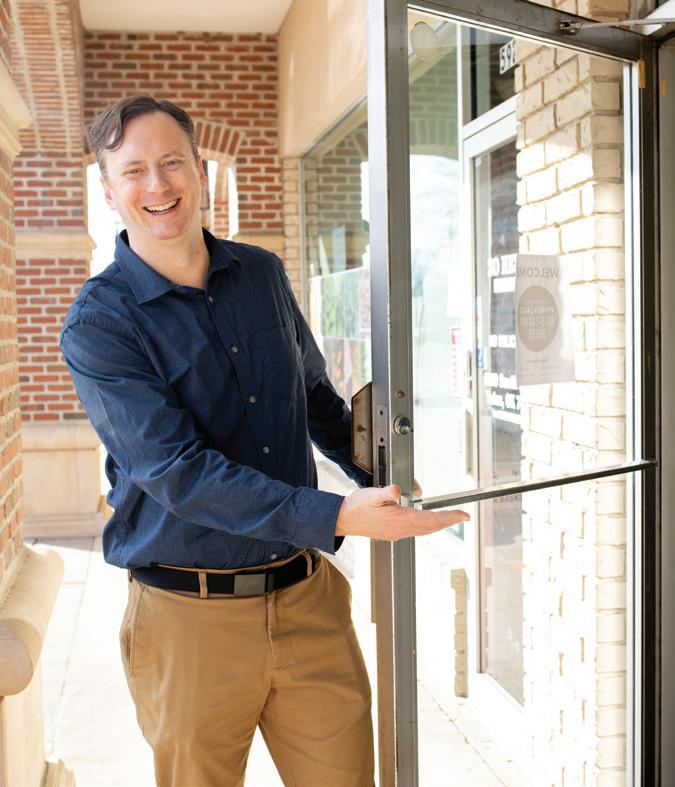
The concepts aren’t always corny. Case in point: Fleming’s hit big with a oneof-a-kind Psudo sneaker last year. “Psudo mentioned they were doing custom prints, so I asked if they could do a Tulsa flag. [Brand founder] Michael Rich gave me a draft in five days, and in six weeks I had a prototype. He flew out for our launch party, so when people came in to try on the shoes, they could meet the owner of the company.
“People went nuts for that shoe, especially when they found out Psudo made it just for our small, humble, mom-and-pop store,” Fleming says. “Customers sent me pictures from the Olympics with the Eiffel Tower in the background and everywhere else they’d worn their flag shoes. I sent the pictures to Michael to show him that his custom shoes were all over the world.”
Mephisto USA CEO Rusty Hall is also a fan of

Fleming’s sometimes wacky social media marketing. “Ryan is an uninhibited entrepreneur who will use any means possible to bring energy to his store,” Hall says.
“He’s funny, yet very smart in his dealing with his customer base.
“The market is tired of boring malls and department stores with zero service,” Hall adds. “Retail started as—and continues to be—one of the best places to look for entertainment, and Ryan brings that into his specialty shoe store.”
Fleming’s offers plenty of substance to underpin its flashy events and collabs. The store’s winning formula involves deep expertise, dedication to making customers feel cared for, and a quest to continually refresh the merchandise mix.
Stanley Eisenman
“I’m always looking for quirky, expressive, unique items that catch the eye,



combined with basic functional things,” Fleming explains. His customer base leans female (65 percent) and tends to be middle-aged or older. Some have challenges like plantar fasciitis, diabetes, or difficult feet to fit and want help finding footwear to prevent pain and help maintain their health.
But that doesn’t mean they’ll settle for boring or basic styles. “The community in Tulsa enjoys a combination of fashion-forward footwear and pragmatic selections,” Fleming explains. “People like bold colors, so sometimes a red sneaker will outsell a black one. Or a multi-colored sandal with primary colors will be my number one seller.”
He likens curating a great selection for his shelves to developing a great menu for an ice cream shop. “You’ve got to have chocolate and vanilla all the time, but you also need to have experimental stuff like lavender chocolate chip with macadamia nuts. Sometimes it goes over really well,” Fleming says. “If we go out, we’re going out in flames because we tried wild things. You’ve got to go for it because that’s also what brings about success.”
You could say Fleming’s defied expectations from day one. Ryan’s dad, the late John Fleming, founded the business in 1985, against the advice of virtually everyone he knew. John was an oil man, but the bottom dropped out of the industry in the 1980s. Friends urged him to bide his time until it rebounded or to move away, but he loved Tulsa and wanted to raise his family there, so he opened an eponymous full-service comfort footwear shop.
“People told him it was a terrible idea,” says Fleming, who grew up in the business along with his two younger brothers. “You could say I’ve been doing this my whole life. I recently found a photo of me in the store when my dad was doing the buildout. I was three and a half years old.”
Fleming considers it “kind of bonkers” that, at 43, he is married with his own three- and five-year-old children and running the store himself. His wife, Carla, pitches in with payroll and accounts payable.
“They are truly a family footwear store,” says Spears. “Carla and the children are frequently in the store, especially on a Saturday before or after a soccer


game, to check on Dad, bring homemade snacks for the staff and customers, get a pre-game pep talk from Dad, or give him a play-by-play of the game.”
Fleming considers it an honor to carry on the tradition his parents built of “providing the community with an old school, one-on-one shoe consulting environment that people look forward to visiting and spreading the word about,” as he puts it.
That tradition was founded on a customer-first approach. In the early days, “my dad brought in two old shoe dogs who had been selling footwear their whole lives and were about to retire. They taught him the basics of how to greet people, measure feet, properly fit, problem solve, maintain the customer book, call top customers, and deal with returns,” says Fleming. He learned the fundamentals of successful retailing from his parents and passed his knowledge along to his team. “We’re all shoe dogs,” he says. His “rookie” employee has been with him for six years; his oldest hire has been at the store for 19 years. “There’s a lot of knowledge here, and that gives people confidence. It builds trust.”
The Fleming’s team never lets their enthusiasm for a product bubble over into a high-pressure sales approach. In fact, the store puts a premium on treating customers with “compassion,” in Fleming’s words. “We want to be a place where all people feel welcome when they walk in the door, leave feeling cared for, and want to come back.
“We’re not going to jump all over customers and hound them,” he adds. “We’re not in this to make a sale and be done. We’re solution minded. We constantly brainstorm ways to modify shoes to accommodate foot ailments to help our customers. If there’s a problem, we figure out how to fix it or deal with a return properly, so people talk to everyone in their neighborhood about us. Long-term focus is always the name of the game.”
“Ryan’s passion to serve is always evident on the sales floor with his customers. He can turn the most challenging situation around with his charm, quick wit, and exceptional foot care expertise,” says Spears. “He genuinely wants to help people and make someone’s day a little bit better.”
Cultivating a warm, welcoming vibe starts with ensuring that the sales team is happy. “I tell my people there’s no ceiling here. We pay really well, we give


our people growth opportunities, and we openly share knowledge,” says Fleming. “Some stores and salespeople want to keep their knowledge in a vault like it’s top secret. They don’t want to tell anyone what they know because they’re afraid it will give someone else an edge. I share everything I know with my salespeople, my customers, and other retailers. People come back to you when you’re generous with knowledge.”
True to character, Fleming bakes fun into the workday for his team. “I’m involved with a men’s workout collective (F3), and I have a pull-up bar and ring dips in the back. If we’re having a hard time or we’ve had a challenging customer, we’ll do some pull-ups to get the blood pumping, then start fresh,” he says. “That’s our version of retail therapy.
“Our motto is ‘It’s a good day to crush it.’ If we have a challenging day, we go home, go to sleep, then wake up and say, ‘Today’s a good day to crush it.’ If you believe you have what it takes to make it happen, you can
In truth, Fleming didn’t expect to find himself running his parents’ store. After graduating with a business degree and a studio art minor, he took a job with Karavel Shoes in Austin, TX, where he helped build their outdoor and athletic division from 2004 to 2007. He was recruited by Paul Evans of Kanner Corp and spent two years as a sales rep for Kanner but left in 2009 to travel around the world, volunteering and soul searching.

From 2011 to 2013, he was working as a missionary in the Himalayas, helping to sell handcrafted goods made by people with disabilities, when his mom, Angela, decided to sell the family store. “I said I would come home and give running it a whirl,” Fleming recalls. Retail proved a good fit and eventually he bought the business from her.
“Why do I do this? I love working with people,” Fleming says. “I love when people leave our store feeling better than when they showed up. Sometimes they have a hard day, and they come shop with us because they know we’ll encourage them. There is no greater compliment than hearing someone say, ‘I just wanted to come by.’ If we make people feel better, that’s awesome.”
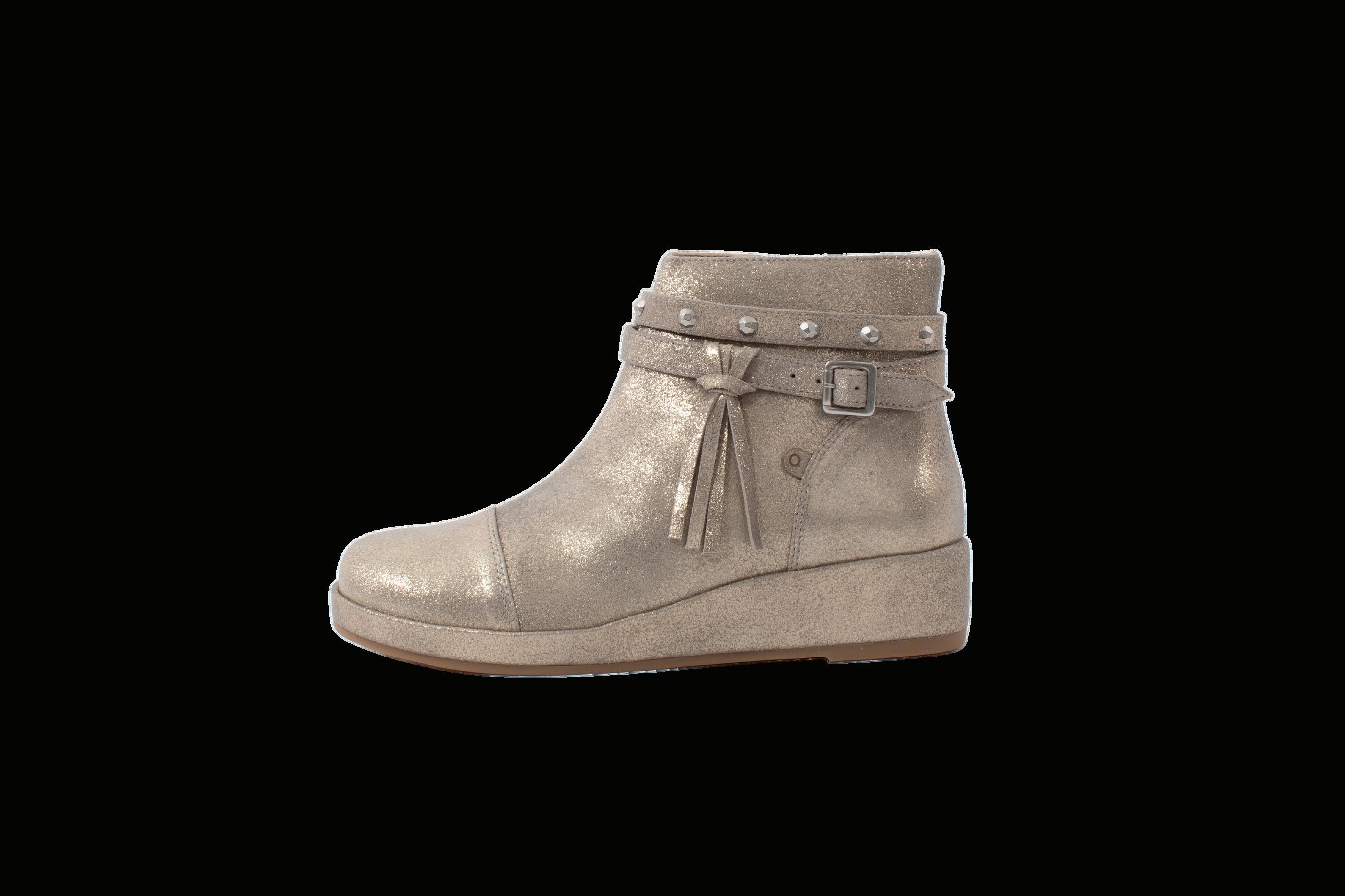
Of course, no retail business is without challenges. Hurdles range from helping younger customers who’ve never had their feet measured feel comfortable sitting down face-to-face with someone on a fitting stool, to dealing with vendors who attempt to snatch business from Fleming’s after the store helped them build a customer base.
“Partnerships matter to us,” Fleming says. “Some brands have good product, but if I don’t feel supported, I search for other options. When my customers ask what I think about a brand, I’ll tell them honestly that we have a better relationship with someone else. All our top sellers come from companies that value small independent retailers.” Among those top sellers are Ara, Brooks, Finn Comfort, Foot Balance, Mephisto, and Naot.
The soft fall season of 2024 presented another challenge, but Fleming applied a lesson he learned as a sales rep. “The stores that close are the ones that offer no excitement. You have to try something fresh no matter what,” he says. “I bought big for 2025 to make sure every time someone comes in, they see new product they’ve never seen before.”
Another goal he’s set for 2025 is to network with local doctors, podiatrists, chiropractors, gym staff, and others who deal with people suffering from foot pain to explain how Fleming’s knowledgeable staff and custom inserts might help their patients and clients. “I want to bring examples of shoes in to show them what we offer,” he says. “Nothing beats a handshake and people asking you questions in person.”
“Fleming’s is one of those stores that you just can’t help but cheer for,” says Spears. “And a big reason for that is Ryan. He’s a guy who genuinely only wants to help people, provide for his family and staff, and make someone’s day just a little bit better.”
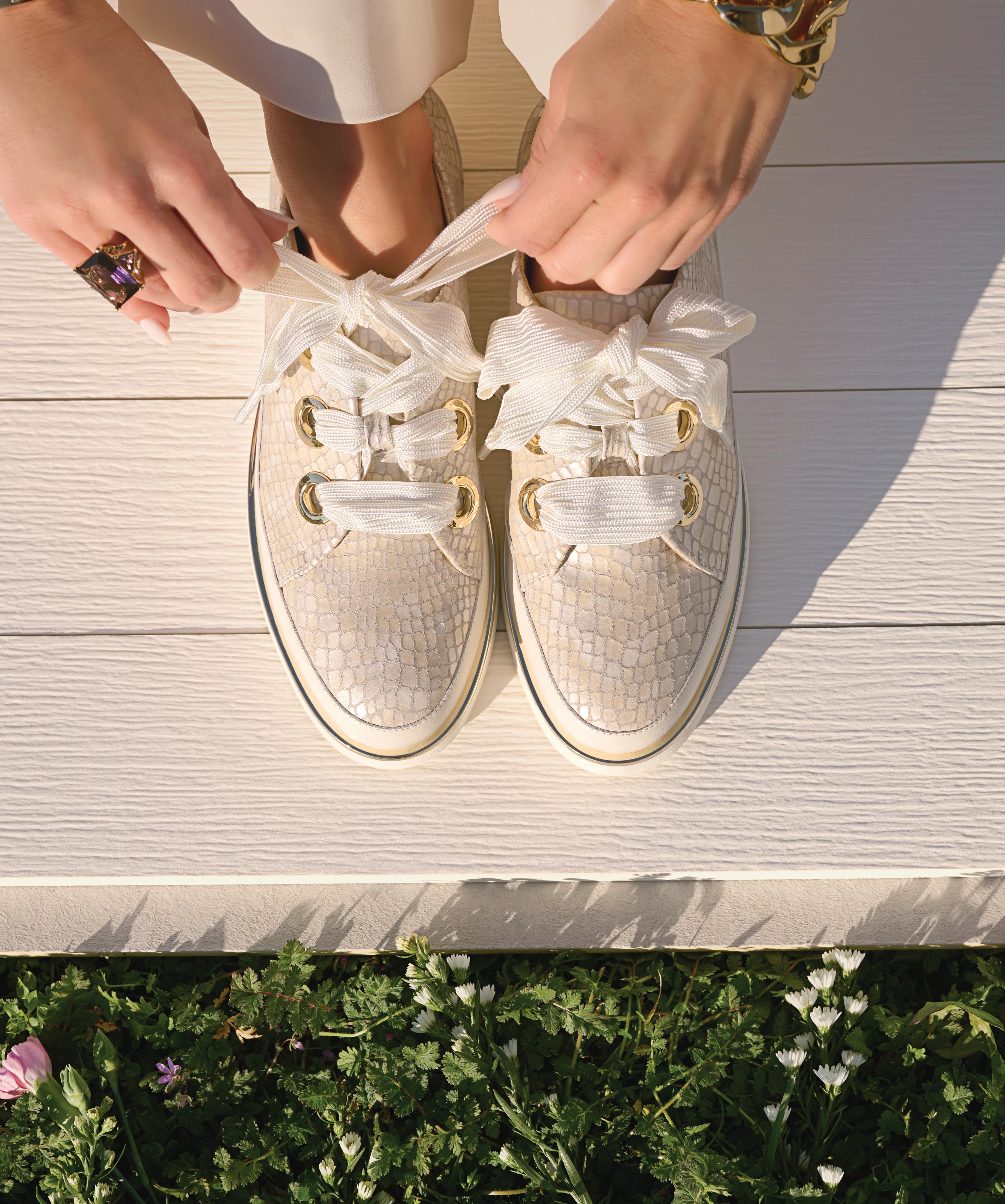





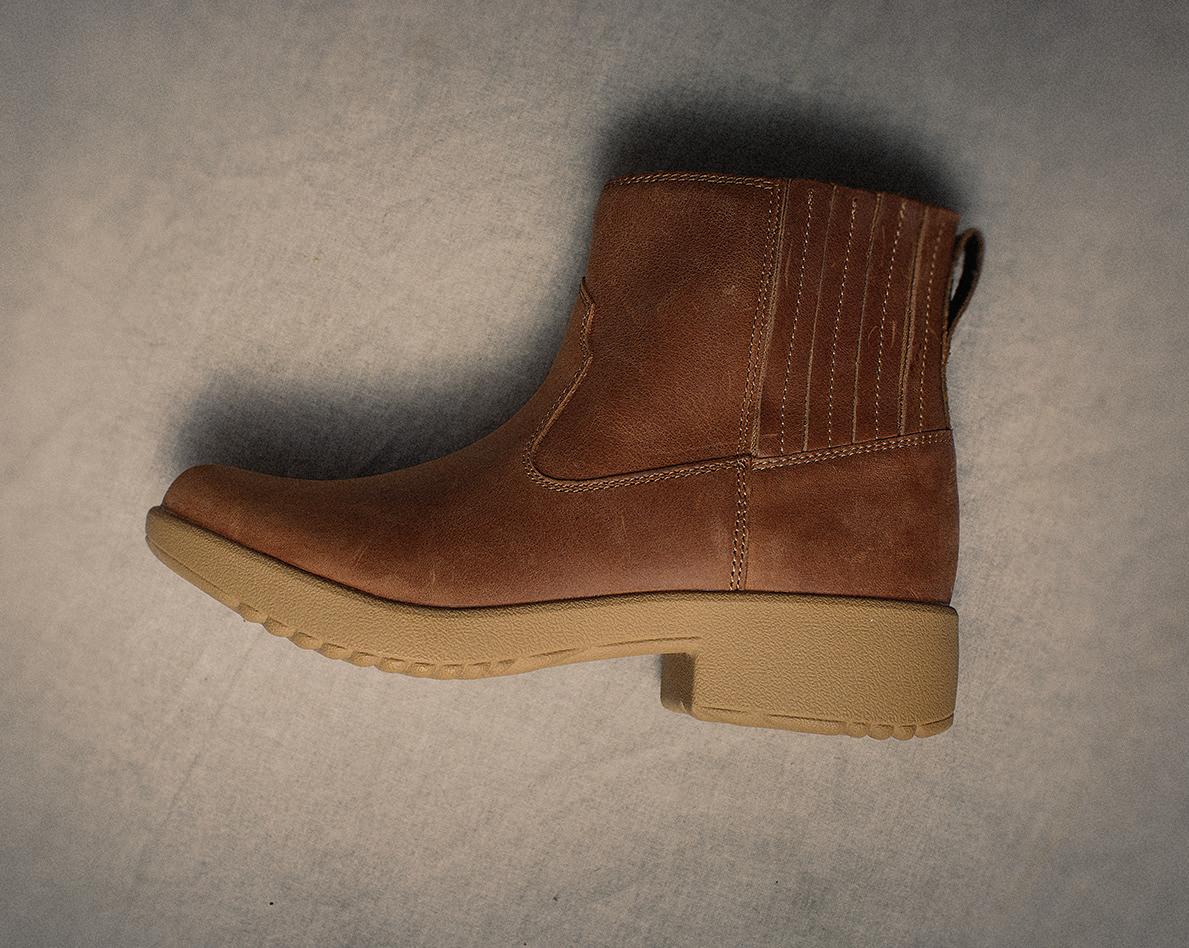

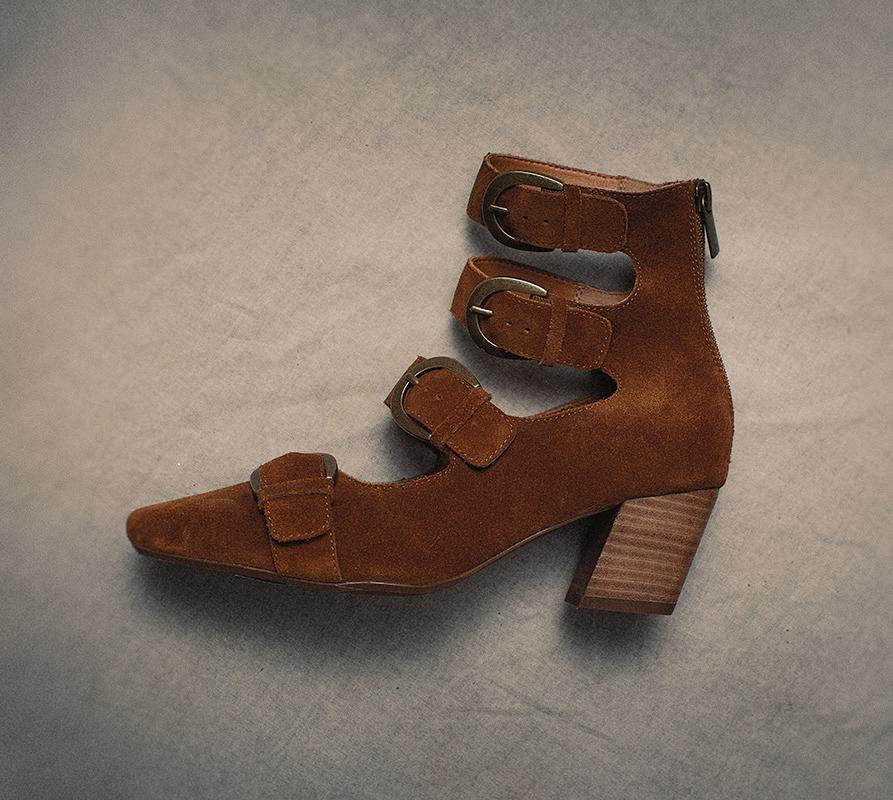

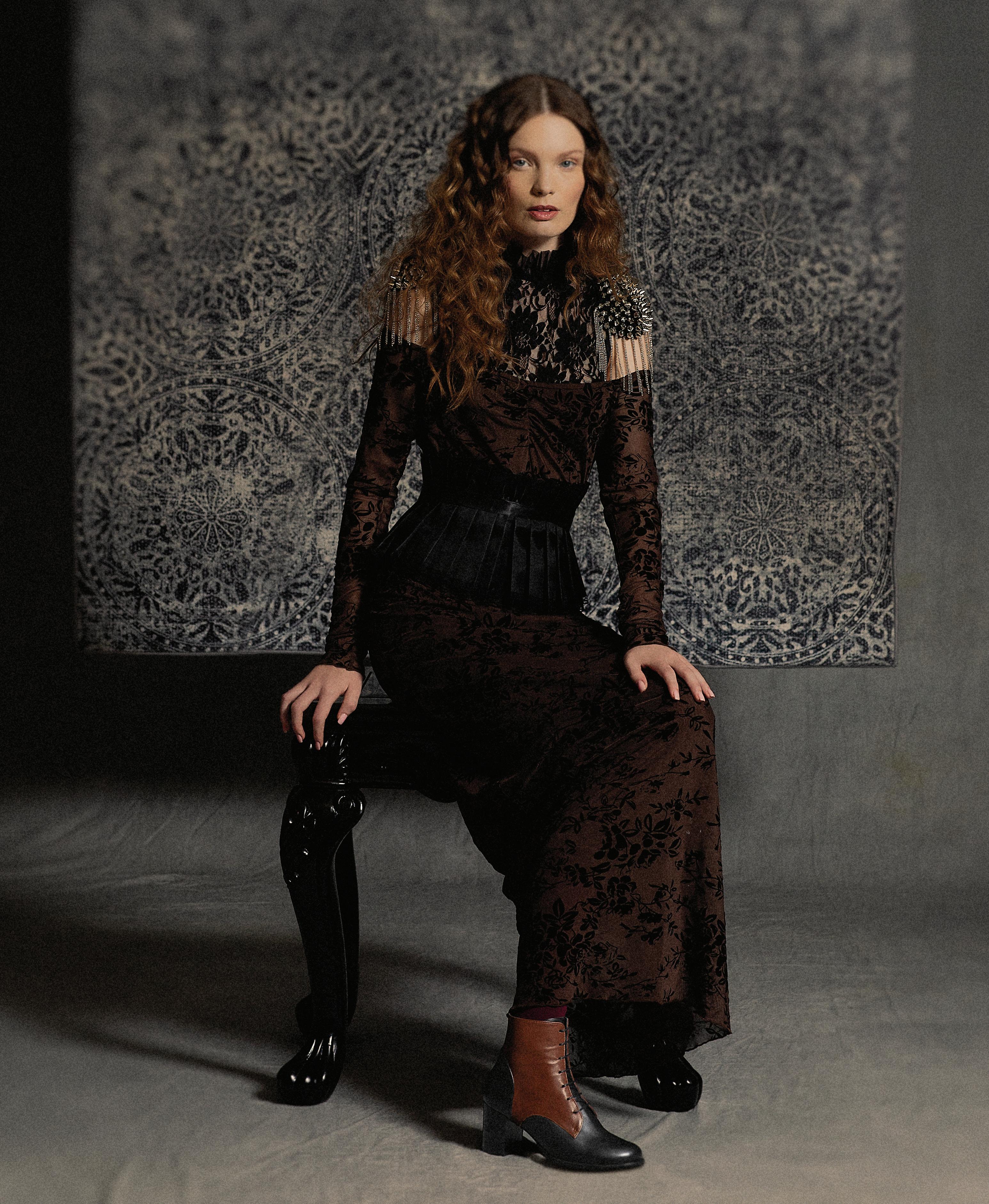

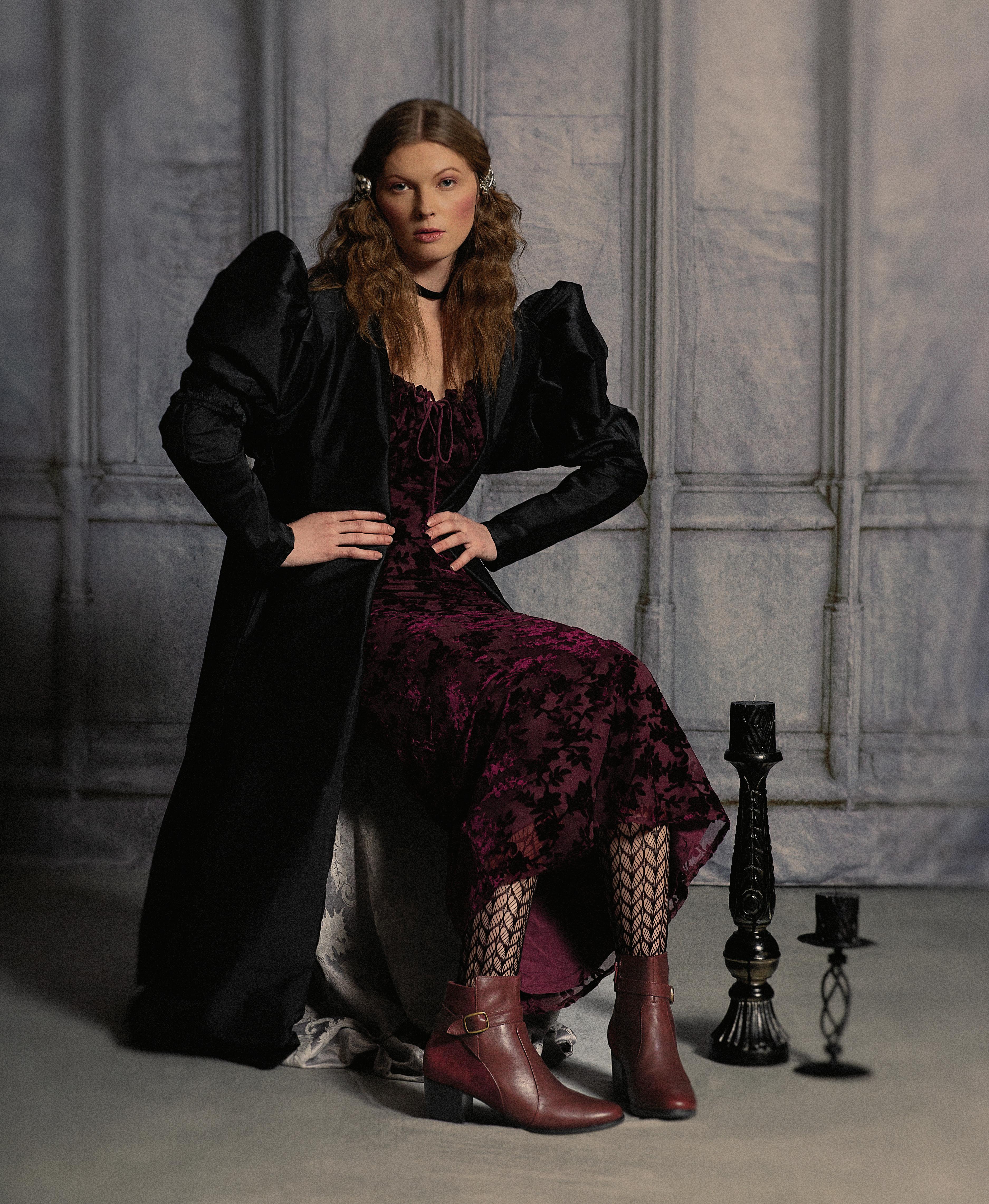



By Greg Dutter
THE COVID PANDEMIC introduced a great reset on how we work, where we live, what we value, and how we dress. Those early days also saw a great pause, which not only brought the four-person creative team behind Kallú together but gave them the added time to “reflect, dream, and plan” how the new label would define luxury in a new world order.
“During this period of uncertainty, we started sharing ideas and a common vision to create something we’re passionate about,” says Luiza Sando cofounder. “Not just product, but a brand that reflects values, style, quality, and a strong commitment to sustainability. Kallú combines elegance and quality with the soul of Spanish craftsmanship and a focus on silent luxury.”
Sando defines silent luxury as not flaunting it. “It’s a form of luxury that’s not ostentatious or excessively showcased yet stands out for its elegance, exclusivity, refinement and authenticity,” she explains. “Our team shares a passion for authenticity and shoes that stand out for their quality and essence. We believe true luxury doesn’t need to be displayed because its value lies in the details and the care invested in every step of the process.” Sando adds, “With silent luxury, details are very important: premium materials, refined design, durability, and sustainability—qualities that Kallú embodies in every style.”
It all starts at the “prestigious” factory, located in Spain’s Elda, Alicante region, an area known for its exceptional craftsman ship. “The factory is renowned worldwide and produces for globally recognized luxury brands,” Sando says, adding that the craftsmen pay attention to the smallest details. Next is the use of genuine materials. “Our fine leathers offer signifi cant advantages in terms of durability, breathability, and comfort,” she says. “In addition, leather is a more sustainable option when produced responsibly, which we do.”
The essence of Kallú is timeless designs while keeping current trends in mind. That spans sandals, ballerinas, loafers, pumps, and boots. “We blend classic silhouettes with the latest trends, which avoids the need for frequent replacements, combats the fast fashion cycle, and reduces our carbon footprint,” Sando says.
Who is the Kallú woman?
seeks quality, timeless style, and durability. As such, Kallú shoes are designed with elegance and femininity combined with everyday comfort aspects, making them possible to wear for a full day of meetings, a day at a fair, etc.
What are the advantages to manufacturing in Spain?

Spain’s worldwide recognition for its rich tradition in shoemaking. Techniques have been passed down through generations and are combined with a deep respect for artisanal craftsmanship. It also allows us to adapt quickly to market trends, thanks to its geographic proximity and shorter production times and avoiding unnecessary delays and additional costs associated with shipping and tariffs. Moreover, Spanish manufacturing upholds high ethical and environmental standards, reinforcing our commitment to sustainability by significantly reducing our carbon footprint. Lastly, the Made in Spain label is synonymous with quality, authenticity, and exclusivity. It adds prestige to our shoes in key markets like Europe, the U.S., and Asia, perfectly aligning with our vision of silent luxury.
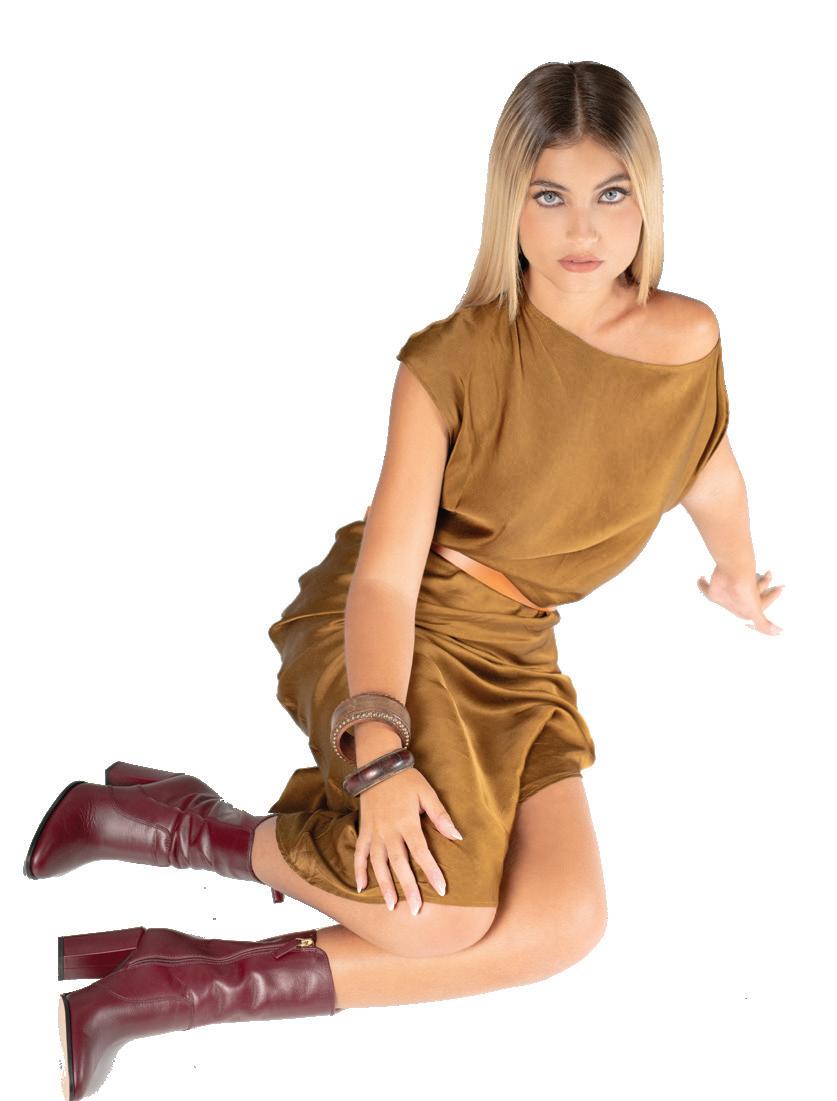
Kallú is a passion project made up of four inspired entrepreneurs who share a deep love of fashion. The team will not be denied. “We’ve overcome many challenges and proven that creativity and perseverance can turn dreams into reality,” Sando says. “Kallú is not just about shoes. It’s also a story of resilience, teamwork, feminism, and hard work. Every obstacle has taught us invaluable lessons, and each pair tells a story of effort and growth. We’re committed to our mission of creating silent luxury footwear inspired by Spanish artisanal tradition, emphasizing quality, elegance, and sustainability.”
Spanish class:
Kallú is a lesson in fine leathers, refined designs, and sustainability.
What is your distribution strategy for the U.S.? It focuses on building strategic relationships with key distributors and select boutiques. Every partnership reflects our commitment to sustainable fashion, exceptional quality, and timeless elegance. We’ll be exhibiting at key events, such as Coterie in New York and Atlanta Shoe Market, this month. We’re also establishing a new entity in Miami to expand Kallú’s presence in the U.S. Miami, a vibrant hub for fashion, is an ideal location to connect with clients who value highquality craftsmanship, timeless design, and sustainability.
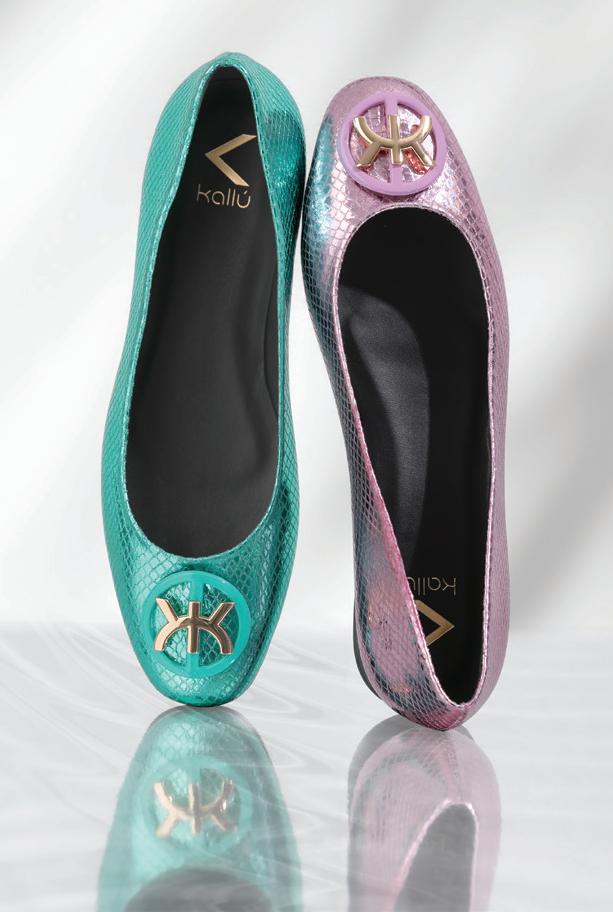
Where do you envision Kallú in three years? As a globally recognized luxury brand with a strong presence in key markets. We will have a loyal customer base that deeply values our dedication to silent luxury and exceptional craftsmanship. This loyalty will not only strengthen our identity but enable us to grow sustainably and solidly.
What shoe must every woman have in her closet? A classic and versatile shoe, such as a pump or ballerina. Both styles complement nearly any outfit while exuding elegance, sophistication, and timeless style. They have the power to elevate even the simplest look into something truly special.
When you hear the word “shoe,” what comes to mind? A path to walk. Shoes speak to me of dreams to pursue and a sense of confidence in every step. I think of elegance, comfort, and how each pair tells a unique story.
James Rowley, CEO/cofounder of Woolloomooloo, looks back on a life well lived.
DEAR 15-YEAR-OLD JAMES…Growing up in the late ’70s and ’80s in ’Straya (Australia for non-locals) is a charmed life. Your red brick house among the gum trees, kookaburras laughing in the background, skateboarding in the cul-de-sac, bombing your sisters in the pool, raiding fridges from house to house with best mates Bruce and Richie and leaving a trail of pool water in your wake…it’s the time of your life, kid. Soak it in because this joyous phase can’t be replicated. But know that one day you’ll be 50 and you’ll think, “Man, I had it good.”
In your spare time, your entrepreneurial spirit soon kicks into gear. You repair lawn mowers out of a shipping container on a busy intersection and refurbish golf clubs at a local course. Figuring out how businesses are built and work will become a recurring theme in your future footwear industry career. For now, though, you’re set on becoming a golf champion or, plan B, a tennis pro. You’re cool with whatever happens first. Apart from schoolwork, life is grand. Somehow you squeak by while prioritizing good times and friends—a quality that, believe it or not, will hold you in good stead in your career. First, though, comes life’s big move No. 1. In 1987, Dad announces the family is shipping off to Seoul, South Korea, for his job with IBM. You’re 16 and quite happy in ’Straya. But once you learn it’s a coed school with no uniforms, you’re on board. What matters now, other than golf and tennis, is meeting girls.
You make friends easily—the Aussie accent is a hit! You also pick up Korean quick, speaking with taxi drivers, bartenders (don’t tell Mom and Dad), and hanging out with friends. In a matter of months, you can order from a menu, give directions, get out of trouble, haggle, and swear proficiently. Itaewon is the local shopping mecca/hangout and where you see more sneaker styles than you can ever imagine. Kicks are cool, but you still prefer the social life of a teenager. When it comes to thinking about your future, all you know is it better be fun and, preferably, owned and run by you.
Marketing, a multi-faceted footwear marketing company that, over the next nine years, spans retail, wholesale, and product development arms. It kicks off with Ven Shoe Salon, a high-end women’s boutique. You meet lots of shoepeople and get to know the industry well. The learning curve is steep but exhilarating. You aren’t just selling shoes, you’re learning about what fills the marketplace, how much does marketing matter, the difference between brand and product, what sells and what flops, etc. You then develop a tech-based sales platform servicing seven brands including Robert Zur, Bolo by Born, United Nude, and Kork-Ease.
Two Dots is solid. You’re young, successful, and holding out for someone who’ll challenge and support you through your entrepreneurial endeavors. Enter Elena. Your future wife, who works for Stuart Weitzman, knows more about shoes than you. She is very helpful with Two Dots. By 2005, you expand to three store locations, a wedding date is set, and a new endeavor is dominating your mind space: the relaunch of Kork-Ease. This marks life’s big move No. 3.
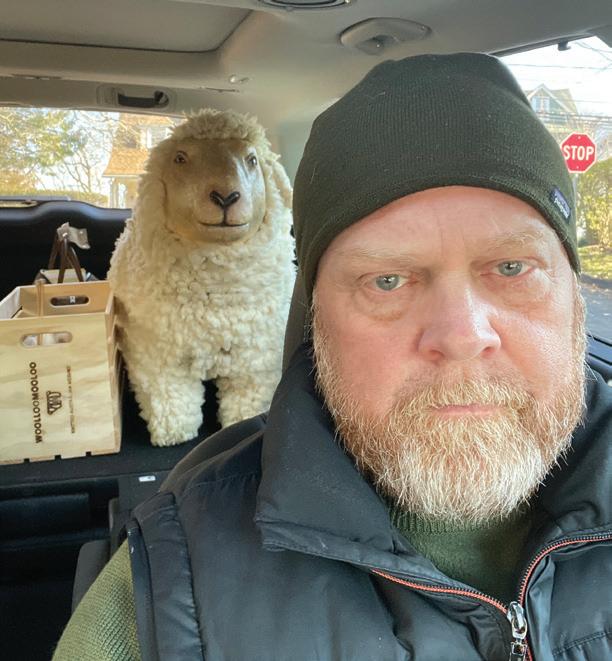

James Rowley is game for whatever life serves up.
What started out as a side hustle quickly dwarfs your retail business and takes your focus to wholesale. Relaunching Kork-Ease is the culmination of all your learnings to date: the importance of brand, relationships, and good ole hard work. In just five quick years, Kork-Ease needs a new parent company to reach its next growth stages. A sale to HH Brown is orchestrated in 2009. You’re back in your old stomping grounds of Greenwich as brand CEO. Over the next seven years the business grows and you take on the role of senior VP of sales and marketing for the Born group.
Post high school you fumble around for a couple of years trying different countries and professions. Stops include a marine mechanic followed by a plant manager for a bull bar manufacturer in Australia. Then it’s a tennis coach in Greenwich, CT. In 1996, you take the college route, enrolling in Pace University to study business and marketing while serving as a tennis pro during the summers. It’s at this point that you realize: “I need more money!”
After graduating, you look for any job. With New York at your doorstep, you take a job in communications and marketing at Ogilvy & Mather. Over the next five years, you create and manage 360 Live, an on-site brand and pre-event marketing team. You see a definite career path here. But then a friend from high school mentions he wants to open a shoe store. The opportunity to branch out on your own is too good to pass up. Life’s big move No. 2 is upon you.
In 2001, you ship off to Austin, TX, where you found Two Dots
Then it’s onto new opportunities. Your first stop is managing Geox USA, a common “next stop” for footwear execs, you later discover. Fair warning: life has bumps in the road. Then it’s on to CEO of Mephisto USA, another bump. After 10 years in the corporate world, your entrepreneurial itch is too great to ignore. You miss being fully in charge. This marks life’s big move No. 4: the launch, in 2020, of Woolloomooloo shoes. The Merino wool-based athleisure brand combines your love of kicks, comfort, and carefree ’Straya lifestyle. Launching a brand amid a pandemic, though, is no picnic. (Side tip: invest in surgical mask manufacturers in 2019.) Everything you’ve ever learned is put to the test while a new industry playbook is being written. You find your footing, though! More importantly, your family that now includes your beautiful wife of 21 years, two great kids, a dog, a house, etc., is healthy. Some things are more important than shoes.
It’s been a great ride so far. Know that none of it would’ve been possible without many mentors who’ve guided you on a more direct path of success. Fred Bright, Mickey Rosmarin, Paul Mayer, and Tom McClaskie, to name a few. But nothing tops the endless support from Mom and Dad. Thank them for me.
Until we meet again, keep dreaming and striving. Be grateful and remain optimistic. Life is a journey. Love every turn.
Good on ya mate, James.
owns a rich retail legacy dating back to 1950 when Russ Woldruff opened a store in Ames, IA. His son Scott, at age 14, began working the floor, where he observed Dad measure customers to ensure a proper fit. It served as perfect training ground for Woldruff’s Footwear, which he opened in 1992 in Goshen, IN.
Employee No. 1, Tim Hethcote, worked at the shop for several years before leaving and returning in 2015 as a manager. Five years later, he and his wife, Linda, bought the business. In addition to top-notch service they’ve expanded the selection. In 2021, they opened Woldruff’s Apparel two stores away. The footwear store carries more than 50 brands. Top-sellers include Ara, Birkenstock, Gabor, Hoka, and Mephisto. The clothing boutique mix includes Bali Corp., Liverpool Los Angeles, Keren Heart, Lulu-B, Michael Tyler, and Tribal.
Hethcote credits the stores’ success to the team’s high level of service, which is increasingly rare. “Our clientele comes back even if our shoes are $5 more than online because they get full service,” he says. “We’ll bring out a dozen shoes or more if we need to make sure we find the right one that feels best to them. We take care of our customers and hope they spread the word.”
really enjoy wearing. It completes their outfit. The apparel has been doing fantastic, especially since we moved to its own building. That gave us more space so we could carry more inventory.
What are your top-selling shoe brands and styles? Since we purchased the store, our athletic selection has boomed. Hoka, New Balance, Brooks, and On have been very good for us. More than a third of our shoe business is athletic. Even in some of our other lines, there are a lot of athleisuretype styles that have done very well because a lot of customers want a dressier shoe that still feels like a tennis shoe.
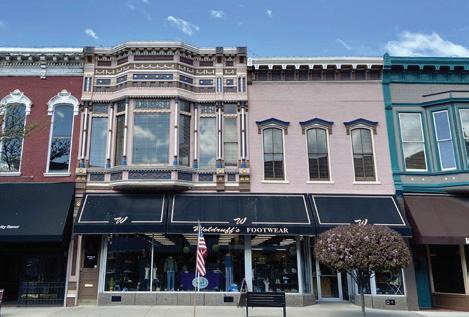
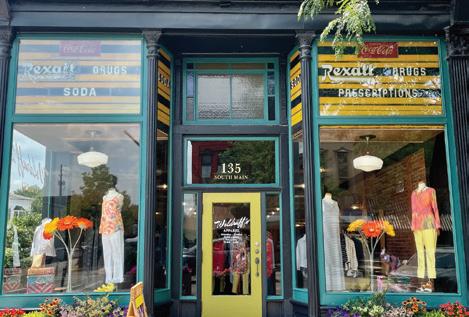
First, happy fifth anniversary as owners. Thanks. It’s been challenging—inventory, obstacles with Covid, being a new owner, and finding out where best to advertise...But we purchased a fabulous shoe store, so in that sense, it was a nice transition.
How’s business of late? We’re doing pretty well. We had a record year in 2023. In 2024, we were down maybe one percent, but that’s still fantastic. Locals have responded very well to us. We expanded our selection, but there were a lot of things that we didn’t change because they weren’t broken. We didn’t even announce that we had purchased the store. It was just let’s keep business going just as it has been.
Why do the two formats work well together? We carry comfortable, casual, quality footwear, and we carry apparel with similar traits that customers
What is the smartest business decision you’ve made this past year? Making sure that we’re staffed. If anything, we might be overstaffed right now. When people walk in the door, we need to have someone ready to serve and help them out. I think the biggest difference between our store and some others is our staff’s knowledge. We’ll answer any questions customers have.
What are your top goals for this year? To reach out to people in outlying areas that aren’t used to shopping with us. I think if they see what we have and experience our service, they’ll become repeat customers. Another goal is to continue to be a place that helps people with their footwear needs. I also want to continue zeroing in on what the customer is asking for, be open to trying new things, and expand on where we’re doing great.

What is the best new shoe brand that you’ve added to your mix recently? Pikolinos.
Who is your core customer? People between 50 and 70. We also thrive when we buy to reach down to get some 40 year olds. Overall, we zero in on people with foot issues. They’re ready for quality footwear that fits properly, and we’re happy to help.
Who is your fastest-growing customer segment? People slightly younger than our core customer. They maybe have been buying online or from big box stores, but when they experience our service and selection, they’re pretty amazed.
How does fit, brand, style, and price rank in order of importance for your customers? Fit, style, brand, price.
Where do you envision your business in five years? I think we’ll be fairly similar. We’re getting close to maxing out this space at 7,000 square feet. I’d like to keep this store at the level it’s at and continue to reach younger generations.
What are the advantages of running a business with your wife? It’s extremely helpful. We bounce ideas off each other. She’s extremely good at aspects that I’m not. For example, she’s very involved with the apparel side of the business. Also, I have a lot of ideas, and she helps me fulfill them. You have to enjoy working with your spouse, and I do. We take the same day off, so we’re here all the time together. We’ve been married for 45 years and it’s been awesome.
What do you love most about being a retailer?
My whole thing has been that I’ve given a lot of good ideas to different businesses, but when it’s just up to me, could I succeed? Could I make this work? Will my ideas work or not? I didn’t want to retire not knowing if I could make it work in the retail ownership side, so that’s why I bought the business. I’m proud that I got in the game. The customer is everything. Tomorrow, they could stop showing up. That’s why we have to treat them as best we can, because they have lots of different places to purchase shoes. I love meeting that challenge.
JENNIFER PARKMAN LONG dreamt of opening a shoe store, but it wasn’t until a family road trip during Covid that she began seriously thinking about turning her fantasy into a reality. She daydreamed about the shop, and the name Blue Suede popped into her head. It’s partially inspired by Harry’s Velvet Room, the Chicago bar where Parkman met her husband. From velvet she thought of suede—one of her favorite materials for shoes—and added blue.
Parkman then convinced best friend, Cynthia McMillioan, to embark on the business journey with her and, in 2022, they combined their love of wine sipping and shopping outings into a shoe and accessory boutique/wine bar. The footwear selection includes sandals from JSlides, Sam Edelman, and Seychelles; boots by All Black, Dolce Vita, and Jeffrey Campbell; and heels from Donald Pliner, Cecelia New York, and Matisse. The wine bar also includes alcohol-free options and snacks.
“Blue Suede is a place where women can connect, relax, and restore themselves,” the owners say. “Our take on shoe shopping brings friends together over a glass of wine, and we make the experience easy by having all the inventory on the floor, so you don’t have to deal with a salesperson until you’re ready.”
What challenges have you overcome to open Blue Suede? We don’t come from retail backgrounds, so we had a lot to learn. Planning during Covid was a curse because everything and everyone moved slowly, but also a blessing because we could get together, put our heads down, and get things done. There was a lot to do—like figuring out how to obtain all the licenses and requirements involved with a bar/shoe store. Our first buying trip was also a challenge because we had no idea what we were doing. Luckily, everyone we’ve worked with was so helpful and offered so much great advice. Our mantra is: We will figure it out! We even got this phrase as matching tattoos because we say it so much!
wines. Our amazing sommelier offers suggestions and we narrow them down to our favorites.
What can customers experience at Blue Suede that they won’t elsewhere? Our experience is truly unique. For example, we have a beautiful lounge that anyone can reserve at no cost, which is perfect for catching up with friends or just taking a moment for yourself. Every detail is thoughtfully curated—from the wallpaper to artwork to events to our selection. And for those who love exclusivity, some of our brands—like Jeffrey Campbell and LOU Shades—are only available in-store, making us even more special. Blue Suede is more than shopping; it’s a place to connect, unwind, and enjoy.
What is the best new brand that you’ve added recently? Oncept. They’ve nailed the balance between sustainability, style, and comfort. They’re meticulous about using only LWG certified leathers, recycled materials, biodegradable components, and recycled packaging. It’s exciting to see a brand redefining what modern, responsible footwear can be.
Who is your core customer? Late 20s to early 50s who seek high-quality, stylish shoes and a shop-

ping experience that aligns with their values and lifestyle. They’re looking for more than just shoes; they want a sense of connection, authenticity, and intentionality in what they buy and where they shop.
Who is your fastest-growing customer segment? Late 20s to early 40s. They value products that reflect their personal style while being conscious of sustainability and craftsmanship. The emphasis is on comfort, fit, and longevity. We’ve also adapted to their lifestyle by adding ecommerce. This customer is also very community-driven, so we’re supporting local causes and collaborating with businesses in our area that align with their values. That includes working with as many female contractors and vendors as possible because we take supporting small, women-owned businesses seriously!
Anything unique about Austin customers? They have a distinct style that reflects the city’s vibrant, eclectic culture. They love bold choices that still feel effortless and approachable. Bright colors, unique textures, and unexpected details resonate, especially in styles that transition seamlessly from day to night. They also prioritize comfort and functionality, which makes sense given Austin’s active, on-the-go lifestyle.
Rank in customer importance fit, brand, style, and price? Fit, style, brand, price.
Do you split the shoe and wine buying? We do both together. For shoes, we’ve developed a great system where we pick out styles and then discuss how they’ll work based on past sales, customer feedback, and future trends. We also decide together on the


Any advantages of owning a business with a best friend? Someone genuinely has your back and reminds you that you’ve got this, even when things feel overwhelming. We problem-solve together and balance each other out perfectly. Jennifer is the go-getter who gets things done, while Cynthia brings big-picture ideas and keeps everything grounded when Jennifer starts to freak out. Above all, we make each other laugh, which is especially helpful when things get tough.
What do you love most about your jobs? Being immersed in our community. Every day we meet amazing people and build relationships in an environment where women feel welcome and understood.
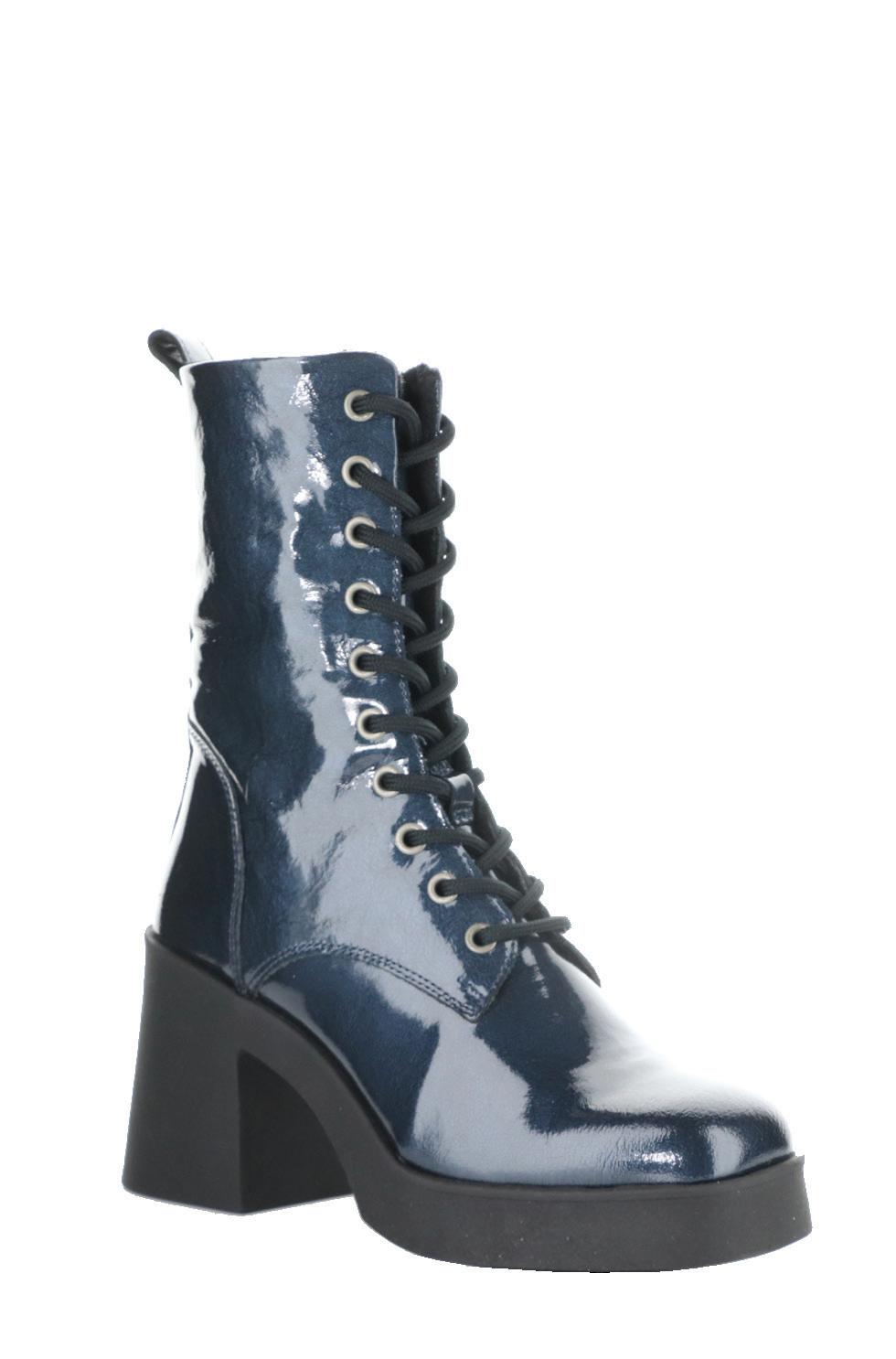
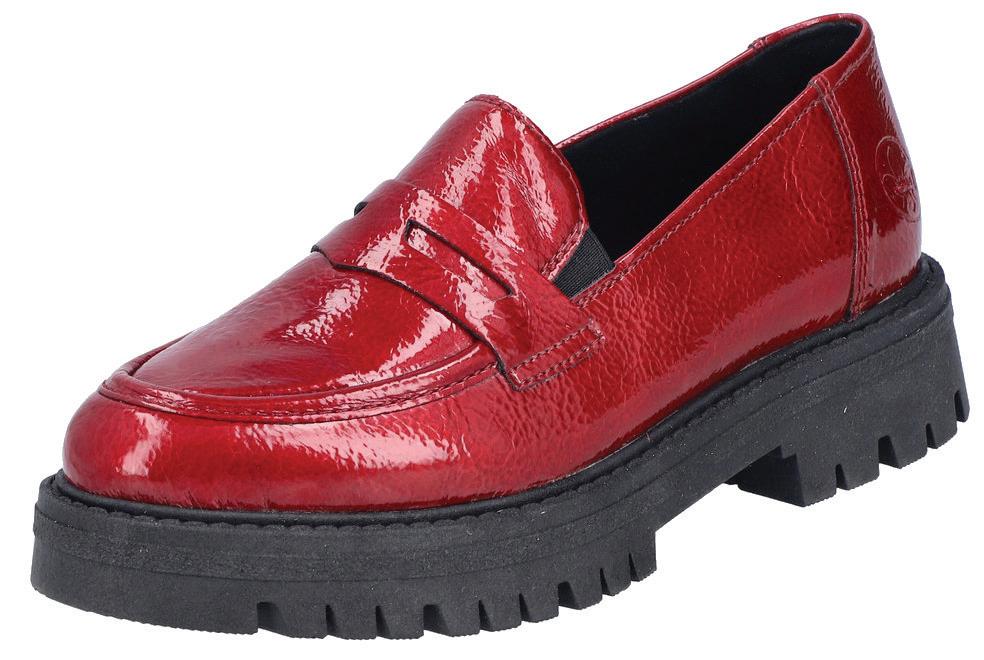
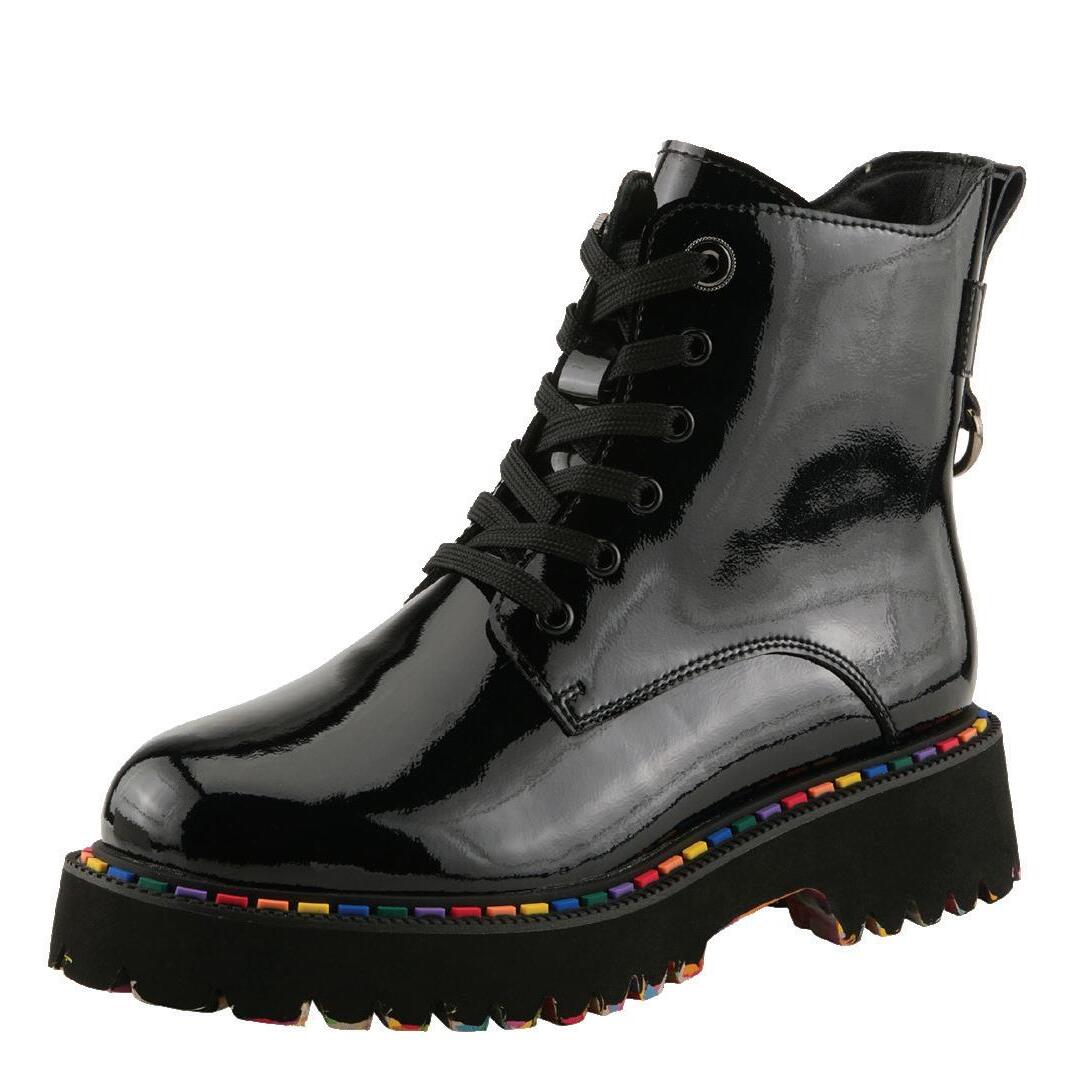

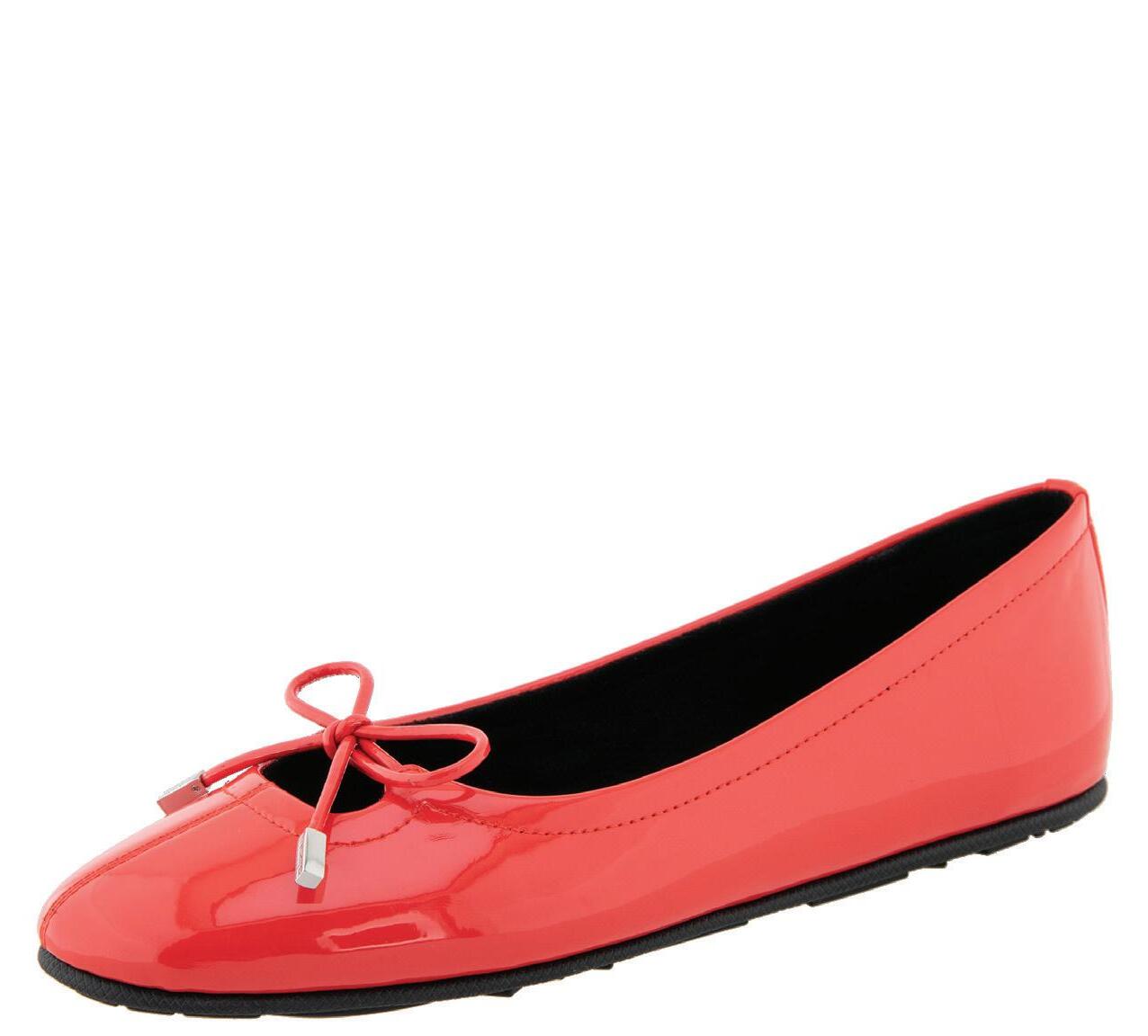



Exquisitely Detailed MASTERFULLY CRAFTED
FW25 | COLLECTION




The frst 3D foot scanning experience designed just for children. Kids shoe shopping is fnally fun!


< Meet Tootsie! Contact Us: bookademo@aetrex.com